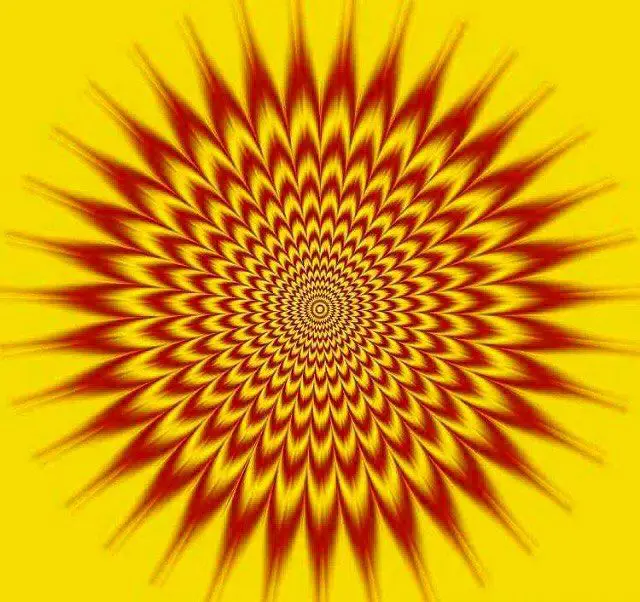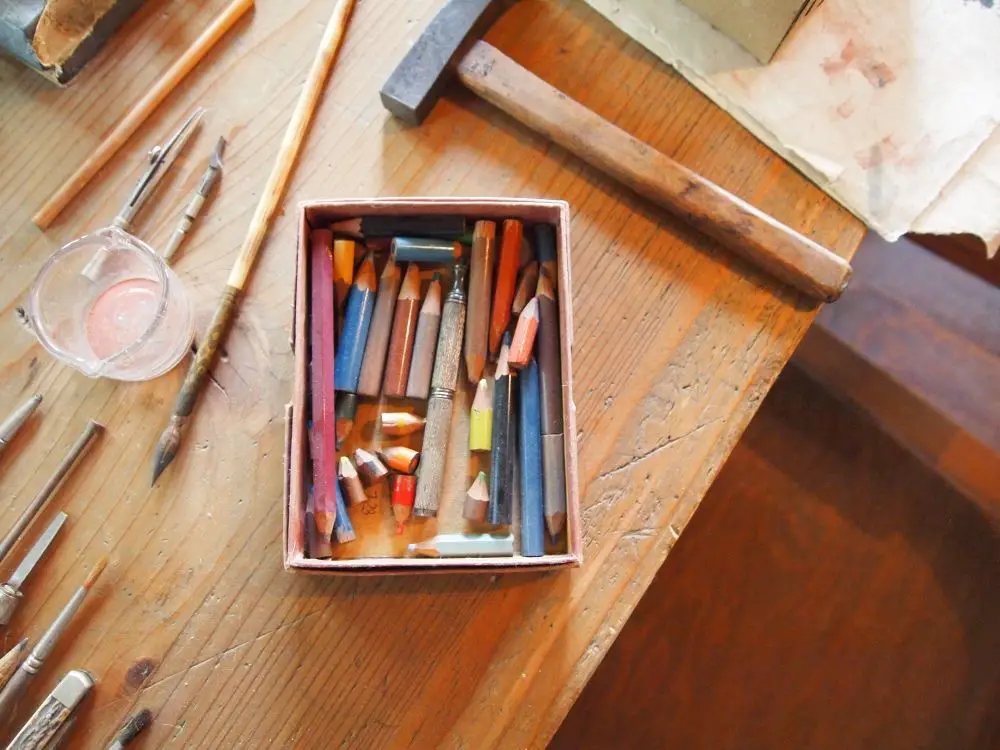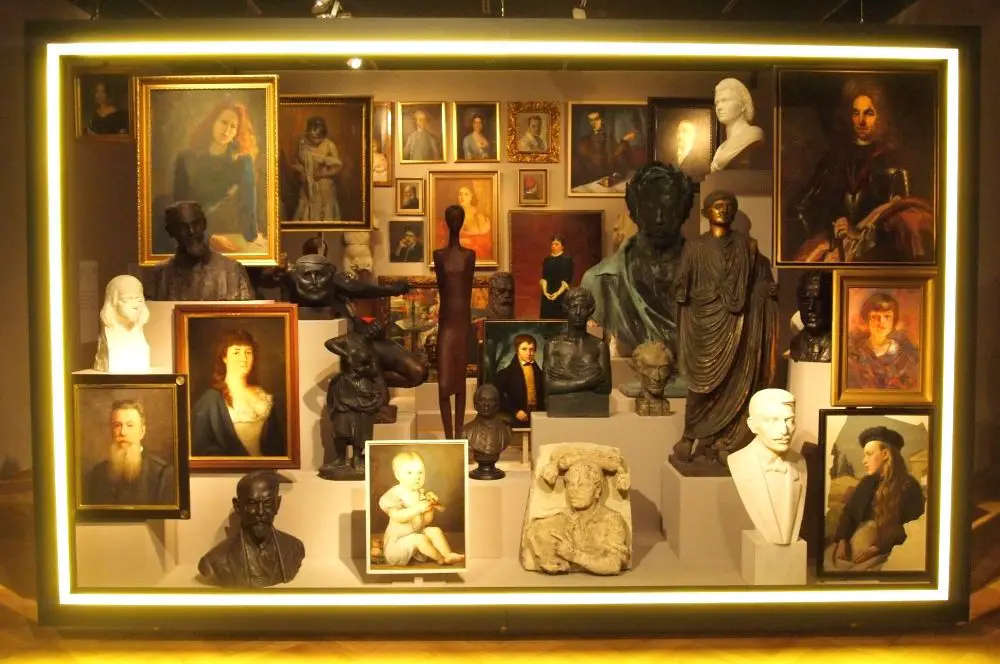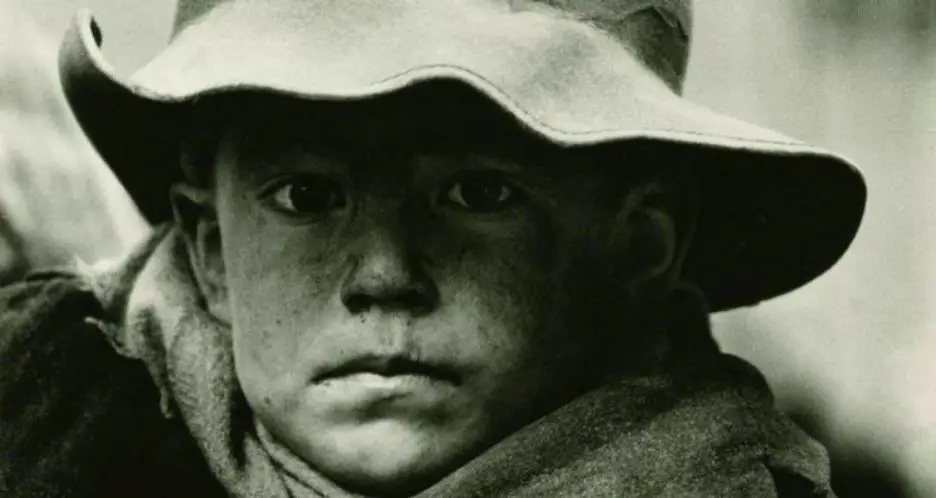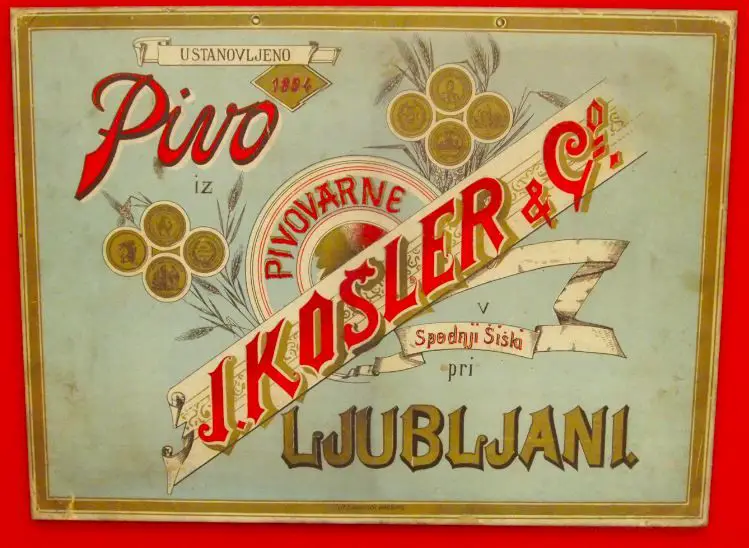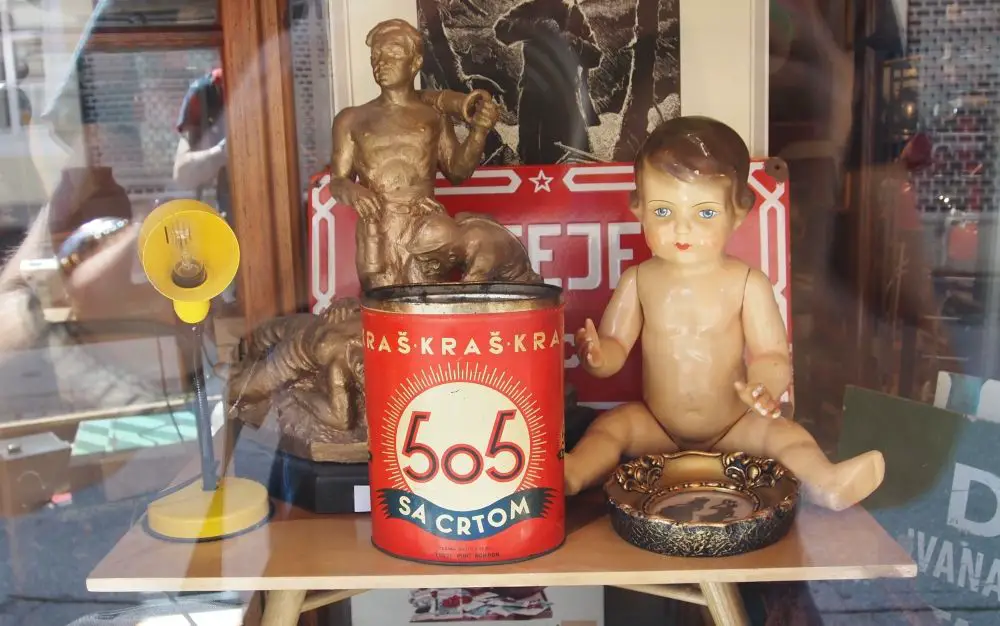Lifestyle
STA, 16 January 2019 - The Slovenian Housing Fund plans to start building two housing complexes in Ljubljana and Maribor this year. In the capital, some 110 apartments for young people will be built, while in Maribor the new complex will offer some 400 apartments with an underground garage.
The fund has already filed for the construction permits and expects construction to start this year.
The youth complex in Ljubljana will be located in the Vič borough, where there are several student facilities already. The new apartments with either one-bed or two-bed rooms will be intended for young people aged between 18 and 29 who want to study or live in Ljubljana.
The 110-room facility will also feature an intergenerational centre, a kitchen with a dining room, a living room, an office, a maintenance room with a separate entrance and an atrium, the Housing Fund said.
According to the fund's head, Črtomir Remec, the construction is to start in the first half of the year.
In the southern part of Maribor, near the city's landmark hill Pekrska Gorca, several two-storey apartment buildings will be constructed in the form of four unfinished squares.
Each building will have a basement, ground floor and two floors, with the complex offering a total of some 400 apartments, 35 to 80 square metres big. Each apartment will also have an underground garage space.
In the first phase, 212 apartments will be built and another 188 in the second, Remec said.
A total of 60 apartments in the complex will be intended for elderly people who need assistance, while the centre will also feature a daycare centre for the elderly, and some shops and offices.
The two projects are in line with the Housing Fund's goal of providing 2,000 new apartments for rent by 2020 and three times as many by 2025 to have a total of 10,000 publicly-owned apartments available for renting.
All our stories on real estate in Slovenia are here, while our “property of the week” stories, showing various properties around the country, can be found here
STA, 15 January 2019 - Slovenian traffic statistics have been improving rapidly in recent years, but despite the advances - the annual number of road deaths dropped below 100 for the first time in 2018 - there are some persistent problems, drink driving chief among them. Change appears to be on the horizon.
Statistics for 2018 show that excessive alcohol consumption was responsible for 22 of the 92 road casualties. This is down from roughly a third of alcohol-related deaths in previous years.
But police have found that all drunk drivers involved in accidents last year had very high blood alcohol content, which contrasts with the overall decline in blood alcohol content in random traffic checks.
This shows, according to traffic experts and driving instructors, that existing programmes for dealing with drunk drivers simply do not work for the worst repeat offenders.
Related: The drink driving limit in Slovenia
In mid-November, for example, police reported pulling over a driving school car. The trainee driver was breathalysed and was found to have been drinking.
Subsequent inquiries determined that he had already lost his licence twice, which is why he had to re-take the driving test.
Thousands lose their driving licence in Slovenia every year, many due to drink driving.
A total of nearly 6,300 licences were revoked in 2017, up from almost 4,300 in 2016, though down significantly from the early 2100s, when up to 9,000 licences were revoked annually.
But temporary revoking of a driving licence is merely the most radical measure, most drink drivers are just fined and get penalty points. Fines range from EUR 300 to EUR 1,200.
In total, those who lose their licence may end up paying up to EUR 3,000 to settle the fine and re-take the test (which may include additional practice hours with instructors). But the cost no longer appears to dissuade drivers from sitting behind the wheel drunk.
"For someone with 25 years of experience behind the wheel retaking the driving test is not the solution. Their problem is not that they lack knowledge. Such drivers would need different treatment," says Manuel Pungartnik, the head of the driving school at the automotive club AMZS.
Related: Food, Alcohol, Sex, Marriage, Divorce & Death: Recent Statistics on Slovenia
In the past another major problem was the forging of licences. There was a huge scandal in Slovenia several years ago when dozens of driving instructors and officials were found to have colluded to issue forged licences; most of those who bought the licenses had lost them due to drink driving.
Moreover, penalty points are erased after two years and when the most severe cases of drink driving get to court, judges are restricted to official records of fines, which are available only for the last three years.
This means they do not get the full picture of a driver's past conduct when they decide whether and how they will be punished.
Saša Jevšnik, the head of the Traffic Safety Agency's department for drivers, says the agency might propose a change of the rulebook.
There might be a restriction on how many times a driver who lost their licence may retake the test, and drivers who cause accidents drunk may be sent to do community work to "face the consequences of their actions," she said.
Infrastructure Minister Alenka Bratušek said after a recent meeting with a road safety NGO that her ministry would examine possible solutions to tackle drink driving, in particular repeat offenders.
"There should be no trouble finding political consensus," the ministry said.
The lights are down, the days are lengthening and the streets are rather empty, as Ljubljana moves into the dead zone between tourist seasons. But while this isn’t good for business it does offer fresh pleasures and new views to visitors and residents, who can now have a little more time and space to themselves in the downtown area. What’s more, there’s still plenty to explore and enjoy, with an incomplete selection of the more organised entertainments, distractions and events listed below, just after the basic information.
If you're reading this and not in town January 14 to 20, 2019, then you can see all the editions of these guides here, with the latest one at the top.
As ever, clicking on the venue names in the list below should get you more details with regard to the time, price and location, as well as other events on at this place in whatever week you're here. Finally, if there's something you want to promote in a future edition of What's on in Ljubljana please get in touch with me at flanner(at)total-slovenia-news.com
Getting around Ljubljana
If you want to get a Ljubljana Tourist Card, which gives you travel on the city buses and entry to a lot of attractions, then you can read more about that here, and if you want to use the bike share system, as useful for visitors as it is for residents, then you can learn more by clicking this. Visitors with reduced mobility will be pleased to find that downtown Ljubljana is generally rated as good with regard to accessibility, and that there’s a free, city-sponsored app called Ljubljana by Wheelchair highlighting cafés, attractions and so on with ramps, disabled bathrooms and Eurokey facilities, which you can read about and download here. If you’re driving into town and don’t know where to part, our guide to how to park in Ljubljana is here.
Want / need cigarettes but the stores have closed? Here's an incomplete list of bars downtown that will satisfy your craving for the demon weed. While if you’re having trouble with the ATMs then here’s a guide to the Slovene you’ll see on screen. If you get a hangover then find out where to get paracetamol (and prescription drugs) in Ljubljana here, while details on emergency birth control can be found here.
Ljubljana is a small and relatively safe city, but if need to contact the police then there’s a special number for foreigners, and that’s 113.
Cinemas and films playing in Ljubljana this week
You can read about all the cinemas in town here, while a selection of what’s playing this week is below, and note that kid’s movies tend to be shown in dubbed versions, so do check before driving out to a multiplex and dropping off the young ones if they can't understand Slovene. That said, parents should pay attention to Kinobalon, which is Kinodvor's regular weekend series of film screenings and events for children, from babies on up, with special parent/child events, "first time in a cinema" screenings, and babysitting. Learn more about it here, and see the current schedule here.
Kinodvor – The arts cinema not far from the train station is showing, among other features, The Old Man & The Gun, Maria by Callas, The House That Jack Built, Suspira (remake), The Favourite and The Incredible Story of the Giant Pear (dubbed).
Kinoteka – This revival cinema isn’t far from Kinodvor, at the train station end of Miklošičeva, and it's showing a few Yugoslav movies this week, including Ubij me nežno, Draga moja Iza, Sedmina, Beograjski fantom and Ne čakaj na maj. There’s also Yi Yi from Taiwan, Le bonheur by Agnes Varda, and Lars von Trier’s Forbrydelsens.
Kolosej - The multiplex out at BTC City Mall is playing all the big movies, which this week include The Grinch (with both subbed and dubbed versions), Fantastic Beasts: The Crimes of Grindelwald, Bohemian Rhapsody, Robin Hood, Johnny English 3, A Star is Born, Gajin svet, dubbed and subbed versions of Spider Man: Into the Spider-Verse, Aquaman, Bumblebee, a dubbed version of Asterix: Le secret de la potion magique, Second Act, Mortal Engines, Južni veter, Mary Poppins Returns, Ralph Breaks the Internet: Wreck-It Ralph 2, and The Old Man & the Gun. New this week are The Favourite and The Upside.
Komuna – The cinema in a basement behind Nama department store is showing The Favourite, A Star is Born, The Old Man & the Gun, and Bohemian Rhapsody.
Skrbovni’ca – Bringing inclusion to the heart of Ljubljana
Whether you’re looking for a souvenir, small gift, some directions or a sit down, consider going into Skrbovni’ca when you’re next between the Triple Bridge and Town Hall, just opposite Vigo. It’s a project that aims to bring more physically and mentally disabled people into the community, and you can learn more about it here.
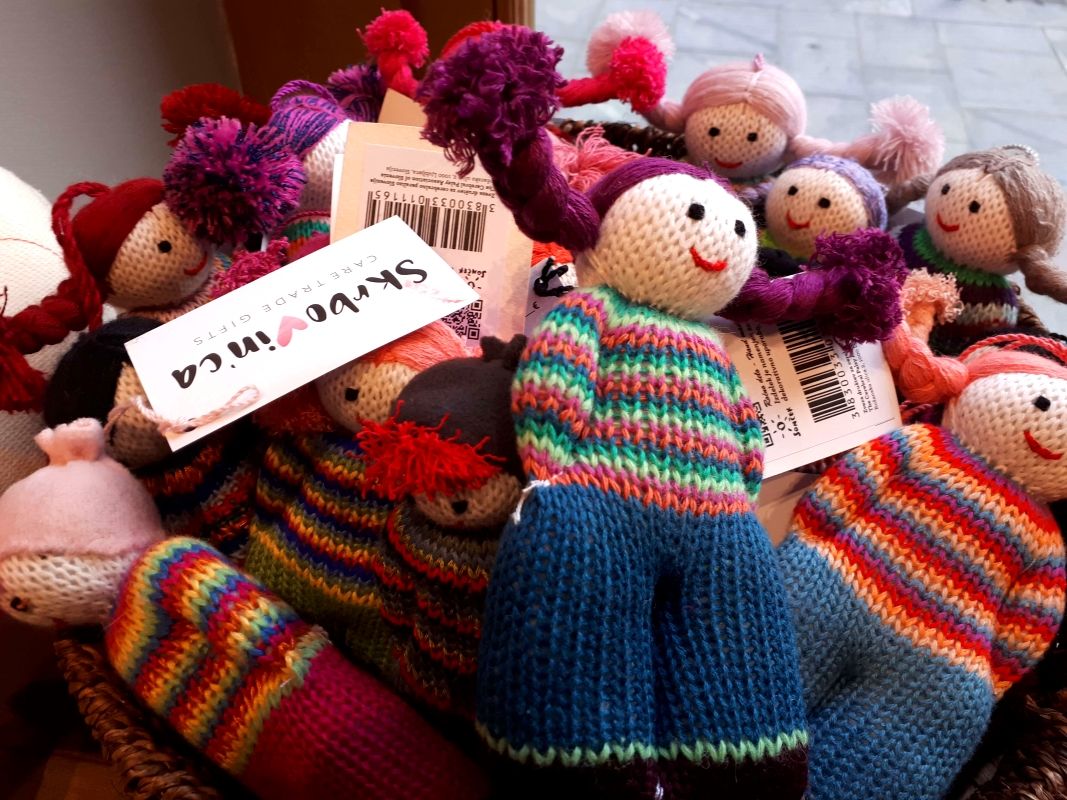
Photo: JL Flanner
Clubbing in Ljubljana
Compared to some European capitals it can seem that nightlife in Ljubljana ends rather early, especially along the river, but there are still bars that stay open late and clubs were you can dance until dawn, and perhaps the best place to stumble across something interesting is the legendary Metelkova. Be aware it's a grungy kind of place and not for all tastes, but also that there's consideable variety to found within the various clubs there, from death metal to electropop, gay caberet to art noise. You can read "the rules" of the place here.
Ambasada Rog – Friday night, at Trubarjeva 72, there’s Fight the power! Music of rebellion - Persian and Arab hip-hop.
Channel Zero – Monday night is Dub Lab, All Night Session: RollKing. There’s more dub on Friday, which brings Dubwise Massive! with Unlisted Fanatic, and Boris Sound System, among others.
Gala Hala – Friday night it’s Zeleno sonce 119: Russian Attack, with Dj SOUL-K and DJ Udo Brenner.
Klub Cirkus – Friday night the more commercial end of the klubland has New AGE / MILI, with trap, hip hop, and R’n’B from the New Age Gang and a live show from Mili. Saturday the dancefloor is then surrendered to TUTTI Frutti: 90s & 00s Hits, with DJs Matthew Z & Matteo Kunst.
Klub K4 – More than 30 years old and still going strong, on Friday you can enjoy Phi w/ DMX KREW Live! The next night it’s the turn of Just A Dance, with DJs Den7el, Von Meister, and Dulash (Kvalitat), along with VJ 5237.
>Harm reduction and drug testing
Drogart is an organization that aims to minimise harm on the party scene, and offers drug-testing services and reports on their webpage. It’s in Slovene, but you can Google translate it or work things out yourself, and our story on the group is here. They recently published a story warning about three pills with very high contents of MDMA, with details (in Slovene) here. Also be aware that all the usual drugs are illegal in Slovenia.
Some fun facts about the city and its castle...
Enhance your stay in the city and impress or annoy your friends and companions by learning some obscure facts about the city here, and the castle here.
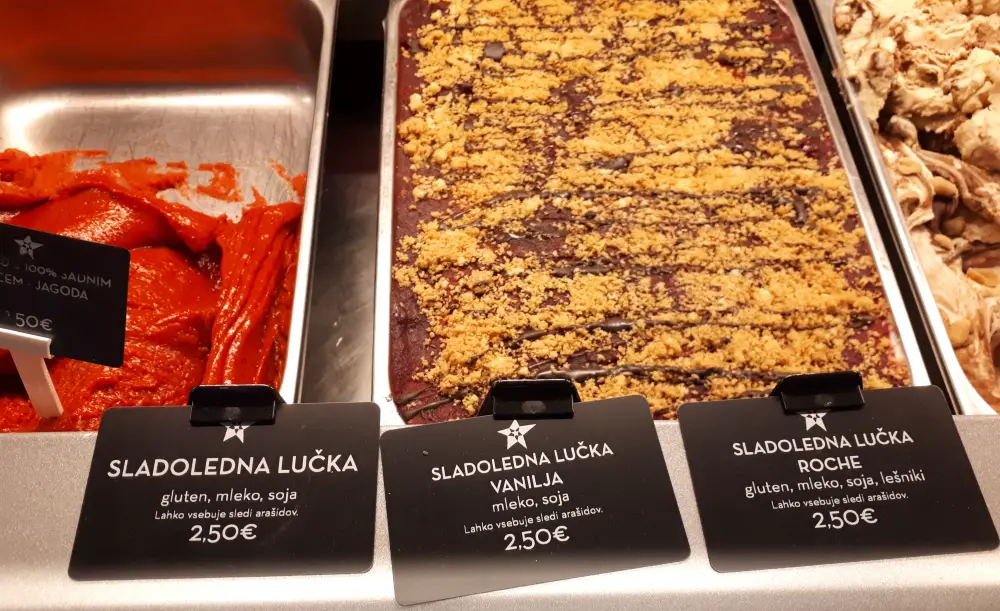
Photo: JL Flanner
Things to do with children in Ljubljana
You can find our Top 12 list of things to do with kids in Ljubljana here. If want to read more about the philosophy behind the wonderful House of Experiments look here, while our trip to the Museum of Illusions is documented here, and there’s always riverside walks, pizza and ice cream. With regard to the latter, take a look at our guide to six places that serve good ice cream in winter.
Mini Teater Ljubljana – The season sees a lot of puppet performances for children, in Slovene, at this theatre not far from Križanke, including: The Frog King, Puss in Boots, Carrot Dwarf and The Little Match Girl. The English schedule for the month is here.
Ljubljana Puppet Theatre - The puppet theatre near the Central Market and next to the Castle funicular has a full programme of shows, for children and adults, with the schedule here.
Photo: JL Flanner
Live music in Ljubljana
Channel Zero – Thursday, from 21:00 to 00:00 you can enjoy live avant-garde jazz with Bonus Level: Ottone Pesante + Koromač, with the former being described as “extreme Italian brass metal lunatics” and the latter as “mixing hardcore and metal with jazz”. Anyone interested in this should note that John Zorn will be in town this summer.
Gala Hala – Thursday, 21:00 to 00:00, there’s stoner rock with Domorodni četrtki: Blackoutt. You can see them playing live at the same venue last year, below.
Kino Šiška – Thursday “diligent folk punkers” We Bless This Mess are playing a show. Saturday it’s Same Babe, who will be presenting their new album.
Klub Gromka – Trobecove krušne peći, an avant-garde postpunk band from Zagreb, will be playing with support from Idrija’s S.O.R, a double-bill you can catch on Saturday.
Ljubljana Castle – Friday is jazz night at the Castle, and this week it’s the Ratko Divjak Quartet.
Orto Bar – Thursday there’s another Kadilnica of Death presentation, with power metal from Minotauro and HairX. Friday night it’s Dirty Skunks Fest, with Armaroth, Snogg, Teleport, Lintver, Valuk, Agregat and many others. The week ends on Saturday with a live set from Get Back, a tribute superband playing rock hits from the 60s and 70s.
Slovenska filharmonija – Thursday, the 17th, The Slovenian Philharmonic Orchestra will be joined by Matej Šarc (musical direction and oboe) and Tomaž Sevšek (harpsichord), playing music by three of the Bachs along with Graun and Krebs, with the featured work by the latter shown in the first video below. Friday there’s new music for the new year, with a programme of Pierre Boulez, George Benjamin, Matej Bonin, and Janez Matičič. The piece by Boulez is in the second video. Sunday, the 20th, Simfonični orkester RTV Slovenija will be playing Mozart and Haydn.
Opera, theatre and dance in Ljubljana
Cankerjev dom – Saturday there’s ballet, with Peer Gynt, as performed by the Ballet and Orchestra of the SNG Maribor Opera and Ballet. The next evening the Slovak Philharmonic and Slovak Philharmonic Choir will be performing Antonín Dvořák’s The Spectre's Bride.
Gledališče IGLU - IGLU Theatre – Saturday night this group is usually putting on an English improv show somewhere in town, but it’s generally promoted after this is written, so check the Facebook before putting on your shoes.
SNG Opera and Ballet – Nothing seems to be on here this week, but it's a nice building to admire on your way to or from the Moderna or National Galleries.
LGBT+ Ljubljana
If you want to learn more about Ljubljana Pride, then take a look at our interview with its president here. If you're looking for more general links on "gay Slovenia", including a history of the scene and various projects, then you can find that here, while our stories about the community can be found here.
Klub Monokel – This lesbian bar in Metelkova is open every Friday.
Klub Tiffany – And the gay bar next door is also open on Fridays, while every Monday until June 2019 there's tango at 18:00. On Thursday, 20:00,
Pritličje – This seems to be the only "always open" LGBT-friendly cafe / bar / events space in town, and perhaps the country, so it's a good thing it's such a good one, open from morning to night, and with fliers and posters letting you know what's happening outside the narrow confines of, say, a general interest online what's on... guide.
Museums and galleries in Ljubljana
Most public galleries and museums are closed on Mondays, although not the National Museum.
Plečnik's desk. Photo: JL Flanner
Plečnik’s House is worth a visit if you want to learn more about the architect who gave Ljubljana much of its character. Read about our guided tour here. Something on for a limited time is Plečnik and the Sacred, showing here until January 20, 2019.
Cankerjev dom – Running until the end of February 2019 is an exhibition titled Ivan Cankar and Europe: Between Shakespeare and Kafka. This is “An examination of Cankar’s art through an analysis of influences and interpretations, and juxtaposition with contemporary European writers. The visually elaborate architectural and graphic layout, supported by audio-visual media, installation art and diverse visual highlights, offers a vivid account of Cankar’s excellence, his comprehensively exquisite aesthetic and artistic vision.”
City Art Gallery – Drago Tršar recently had a show at the main Moderna looking at his monumental works, and now this smaller gallery in the Old Town, not far from Town Hall, is showing some the sculpture’s erotic works, on until January 20, 2019. It’s being promoted with the following example, and is quite explicit in terms of breasts and vaginas, but if that's OK for you and your companions then there's much to enjoy in the paintings, bronzes and ceramics on show. You can read about my visit, and see a lot more pictures, here.
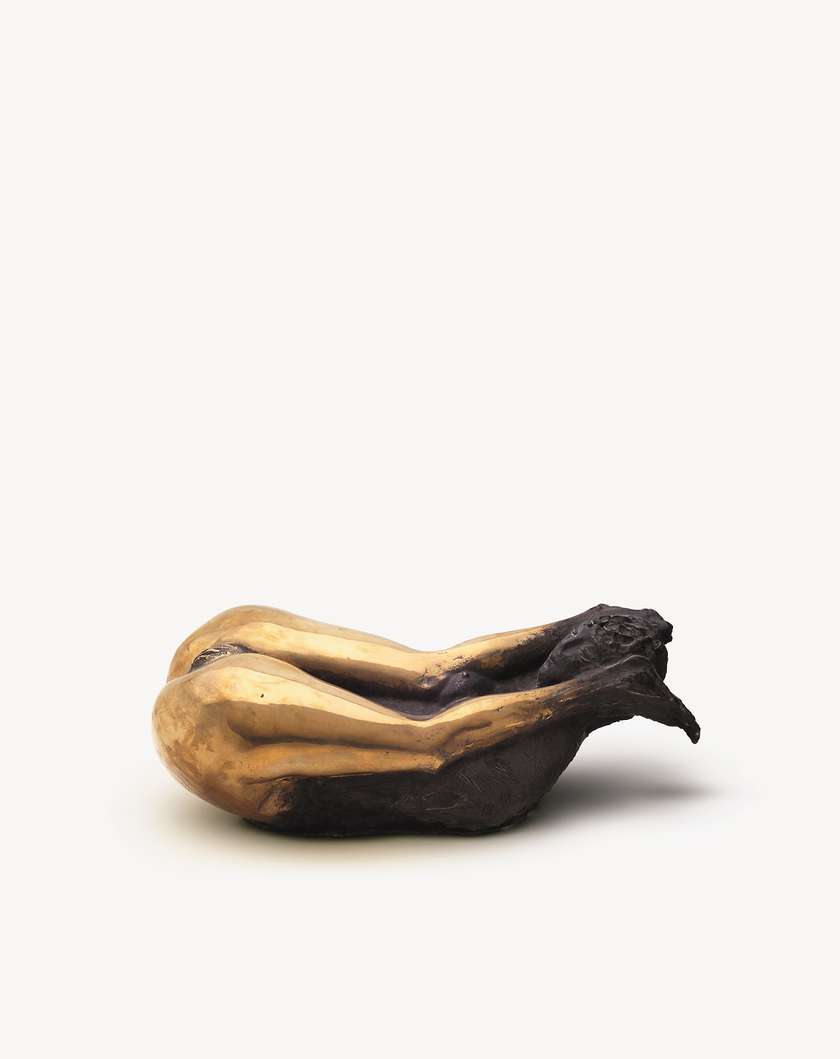
City Museum – The Museum in French Revolution Square has an exhibition on the writer Ivan Cankar that’s on until the end of February 2019, with pictures, books and manuscripts, all presented in Slovene and English. It also has a very interesting permanent exhibition on the history of Ljubljana, from prehistoric times to the present day, with many artefacts, models and so on that bring the story alive.You can read about my visit here. Until March 2019 there's a show highlighting the work Elza Kastl Obereigner (1884-1973), a pioneer Slovenian sculptress, with an example of her work shown below.
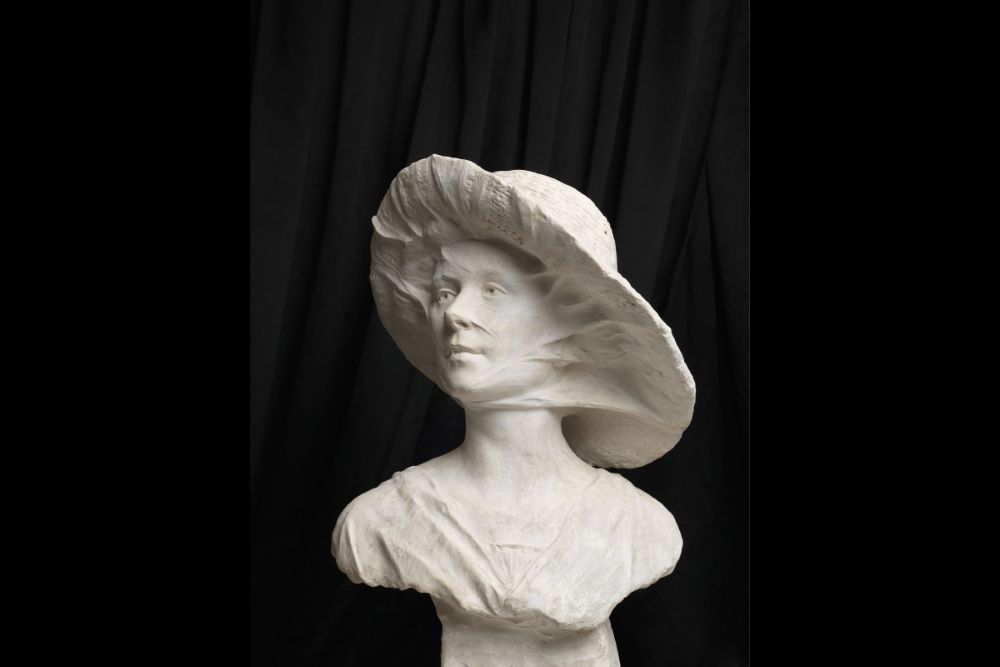
Photo: M Paternoster
The Faces of Ljubljana in the City Museum. Photo: JL Flanner
Galerija Jakopič – On until March 3 is Over My Eyes (Na moje oči), an exhibition of photographs from Iraq taken by Iraqi photographers.
International Centre of Graphic Arts – Running from Friday until March 3 2019 there will be a show of posters from Milton Glaser, while until March 3 2019 you can enjoy paintings, drawings, prints and murals from Nathalie Du Pasquier in a show called Fair Game. The latter is being promoted with the following image.
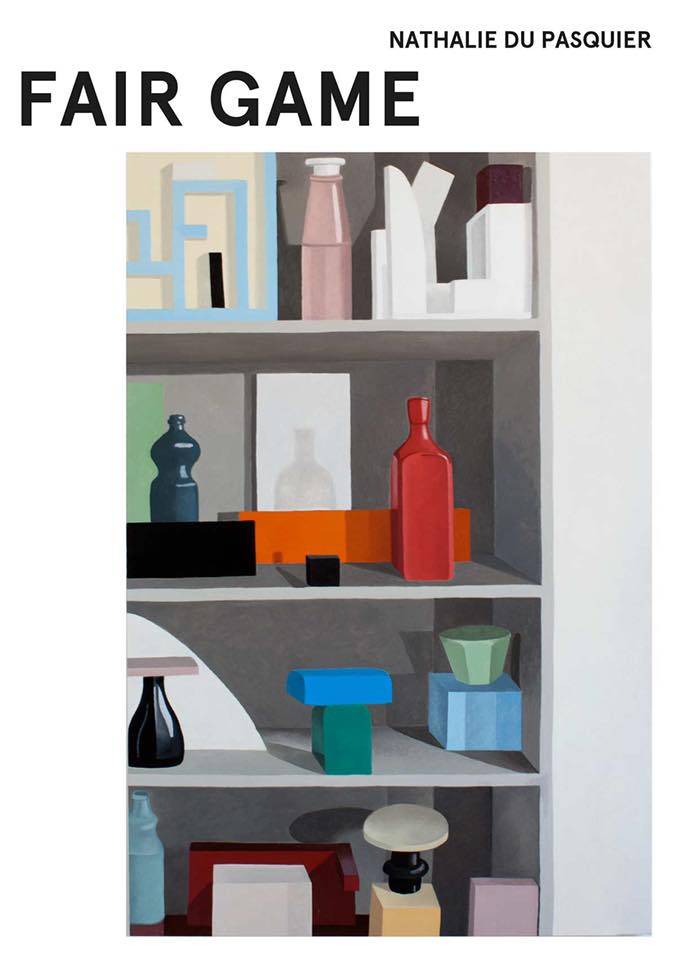
Ljubljana Exhibition & Convention Centre – Just outside the centre of town, at Dunajska cesta 18, you can see a lot of plasticized bodies at the Body Worlds Vital show, running from October 20 until January 20 2019.
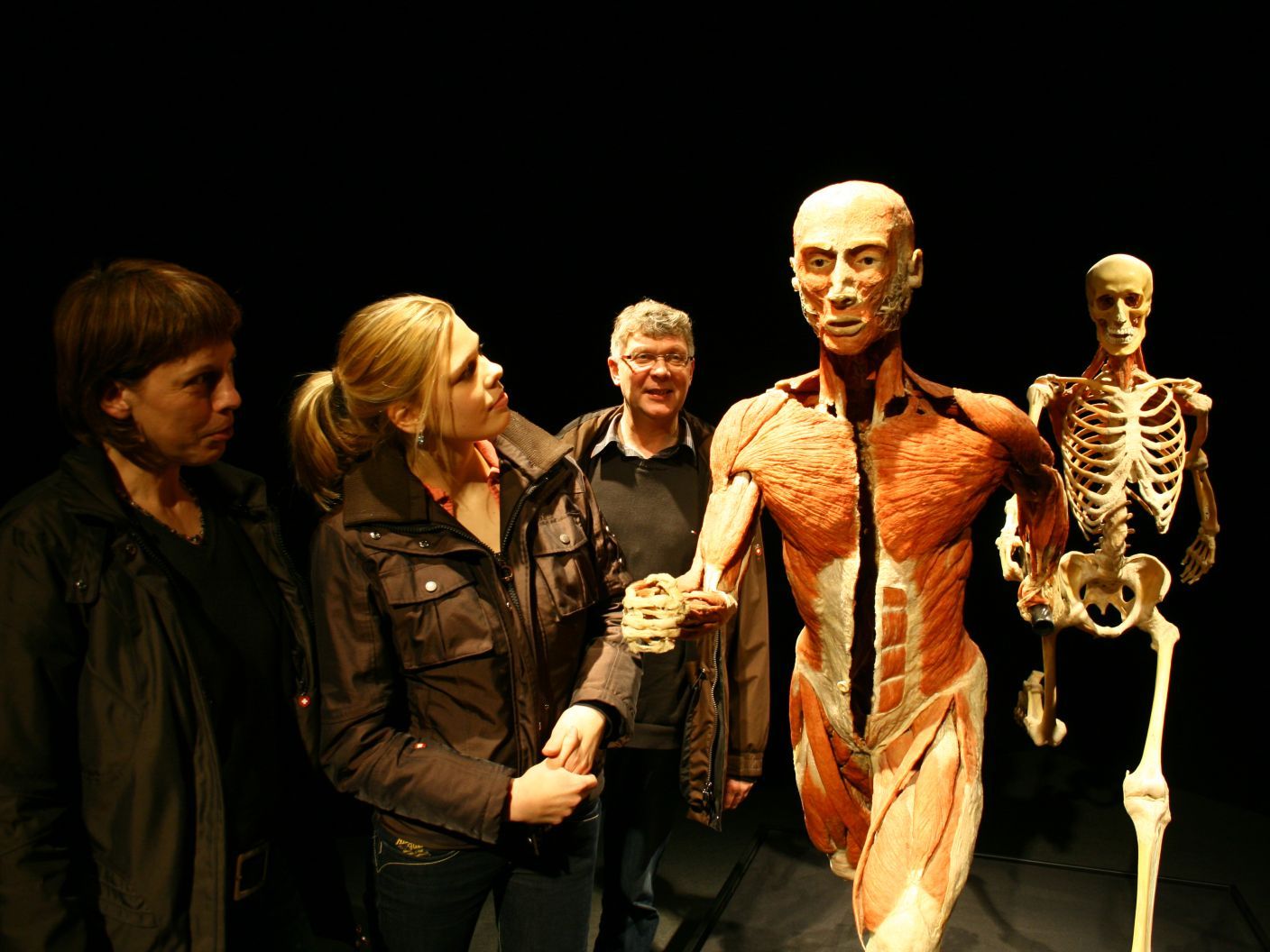
Photo: Body Works Vital
MAO – The Museum of Architecture and Design has much of what you'd expect, and until March 25, 2019, has a show on Ljubljana and it's relation with water. Until February 24 visitors can enjoy Toasted Furniture, which presents some experiments with the reuse of plastic waste, and until February 28 there's a show on Oskar Kogoj and his chairs.
Sam, 1966, fotografija na srebroželatinskem papirju. ©Stojan Kerbler
Moderna galerija – The main branch of this gallery, to be found near the entrance to Tivoli Park, has a good collection of modern art, as well a nice café in the basement.
Museum of Contemporary History – The museum in Tivoli Park has two new shows. One is called Museum's (R)evolution 1948-2018, marking the place's 70th anniversary with an exhibition tracing its evolution through artefacts, photographs and personal stories and running until January 6 2019 (details here). There's also In Search of Freedom: 1968-2018, looking at the 1968 student protests.
National Gallery – The country’s main gallery has “the best” of what’s on offer from the Middle Ages to non-contemporary modern visual arts, and is in a great location for exploring other areas, just by Tivoli Park and opposite the main branch of the Moderna galerija. Running until February 10 2019 is a show called Ivana Kobilca (1861-1926): But Of Course, Painting Is Something Beautiful!, featuring works like the one below. You can read about our visit to the room containing sacred art from the Middle Ages here, and see a picture from our trip after the two girls.
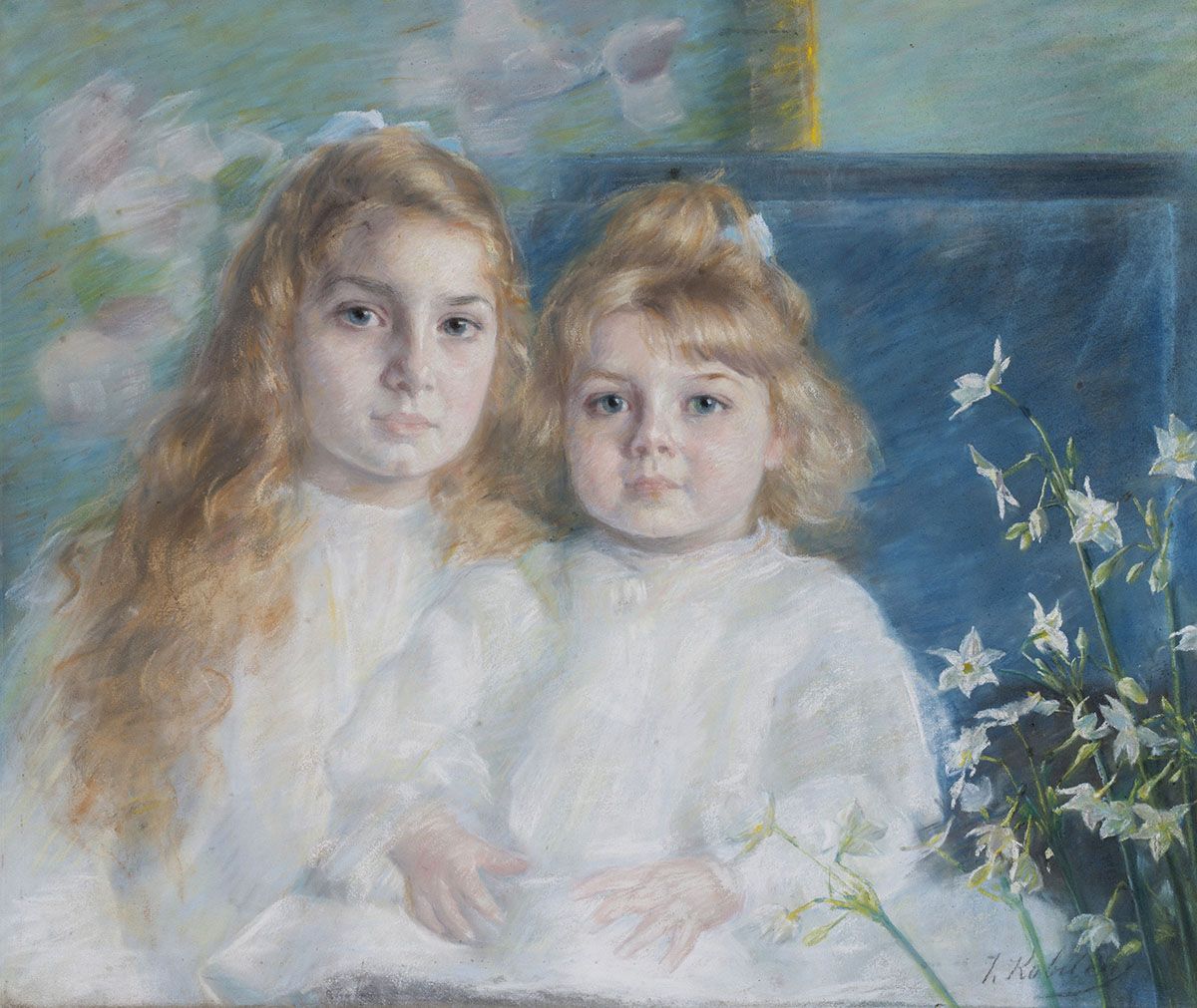
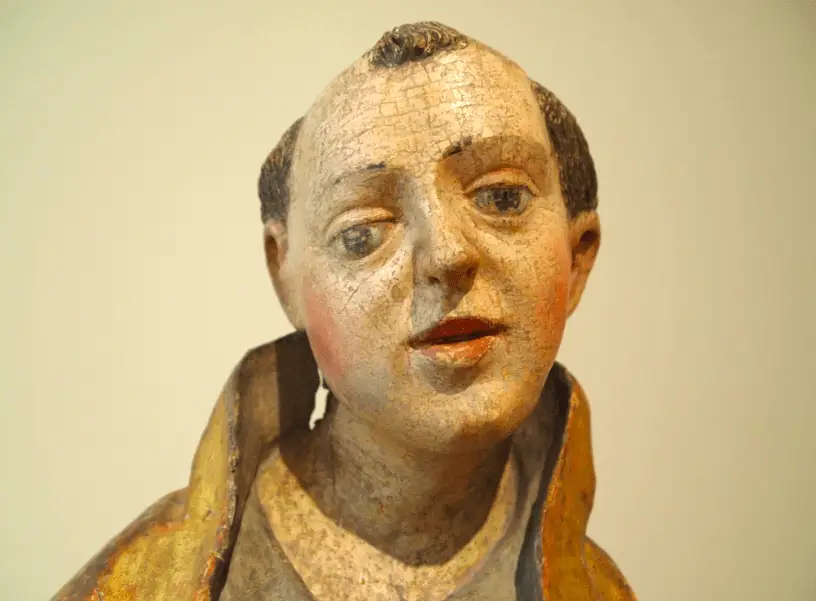
JL Flanner
National Museum of Slovenia – There’s plenty to see in the permanent collection here, from Roman times, Egypt and more, with the big draw this season being the exhibition of over 140 items of gold from Ming Dyntasy China, as reported here, and with an example below. This runs until February 15th.
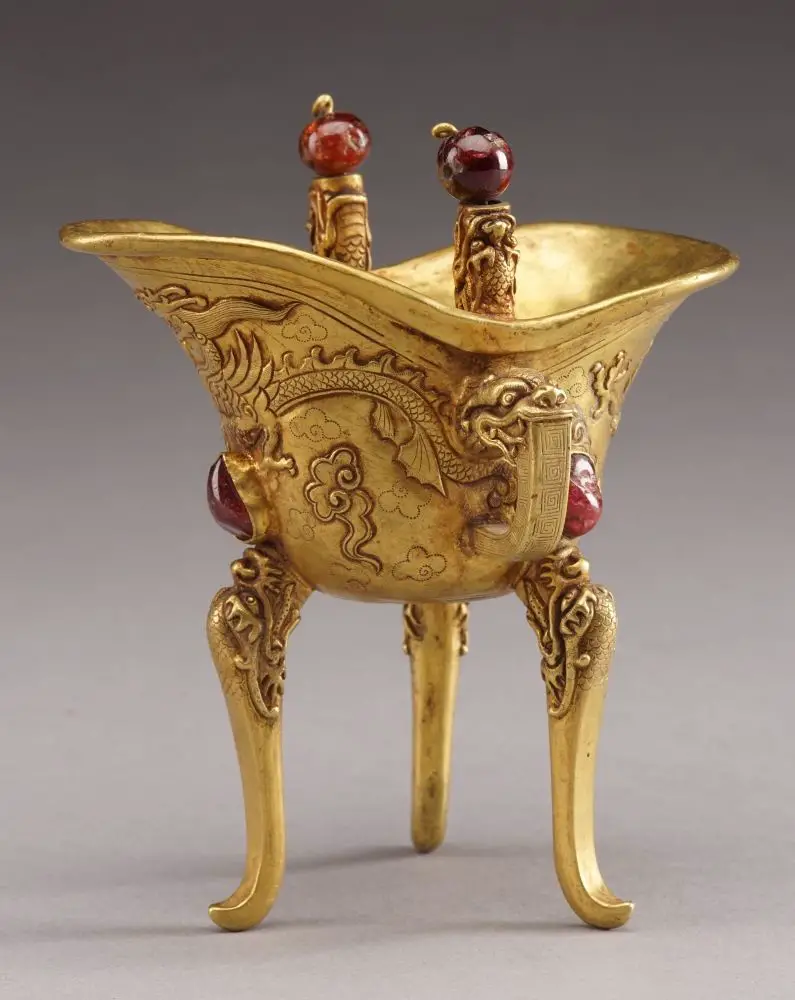
Photo: Wang Wei Chang
Meanwhile, the museum's Metelkova branch, located between one branch of the Moderna galerija and the Ethnographic Museum has some rooms on Church art, furniture and weapons, with the latter including more guns than you'll see anywhere else in town, and quite a thrill if coming from a nation where such objects are not household items.
Natural History Museum – On until the end of June 2019 is Our Little Big Sea, which takes a look at the oceans.
Škuc Gallery - You can find this in the old town, and until January 20 there;s an interesting and often moving show called Kids that you can see for just 1 euro, with works by Johanna Billing, Matic Brumen, Andreja Džakušič, Priscila Fernandes, Eden Mitsenmacher, Franc Purg, and Pilvi Takala.
Slovene Ethnographic Museum – The museum currently has a temporary show on Bees and Beekeeping, on until June 16 2019, as well two permanent exhibitions. One of these is called Between Nature and Culture, and has a great collection of objects from Slovenia and around the world, well worth the trip up to the third floor to see it (as recounted here). This place is located near the newer branch of the Moderna galerija and Metelkova.
Union is "the Ljubljana beer", but now both it and Laško are owned by Heineken. There are many local brews on offer around town, though, if you want to explore IPAs, stouts, wheatbeers, sours and so on Photo: JL Flanner
Union Experience – The Ljubljana-based brewer has a museum showing the history of the company, with the ticket also including access to part of the factory and a few samples of the product. You can read about our visit here.
It's not a formal museum, but if you're interested in "Yugo-stalgia" then you'll enjoy a trip to Verba, a small, privately run space that's crammed with objects and pop culture items from the era, and is conveniently located at the start of one of the short walks to the castle. It's also a great place to take pictures, if you leave a donation, and you can read more about it here.
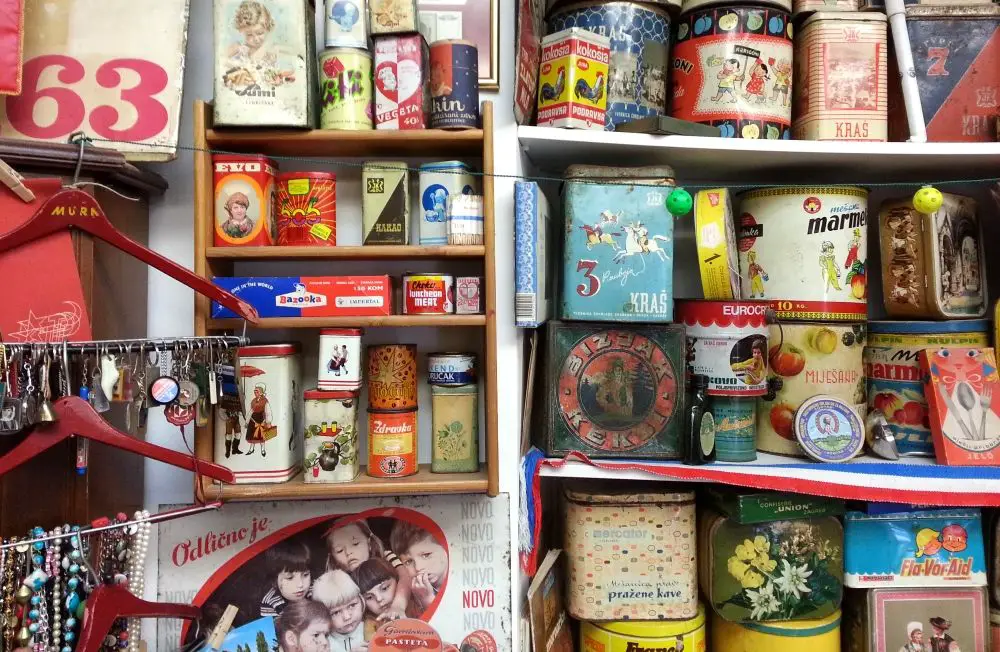
Verba. Photo: JL Flanner
Alternative Ljubljana isn't a museum or gallery, as such, but instead turns the city streets into a museum and gallery. Learn more about their tours of street art, history and LGBT Ljubljana here.
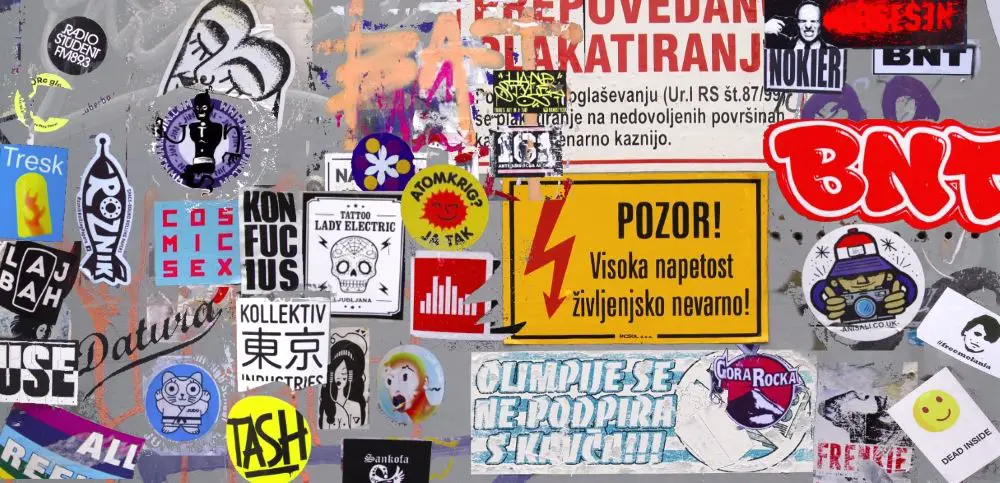
Photo: JL Flanner
Other things to do in Ljubljana...
If you'd like to spend an evening painting with others, then take a look at Design with Wine, which organises painting parties on Trubarjeva cesta,
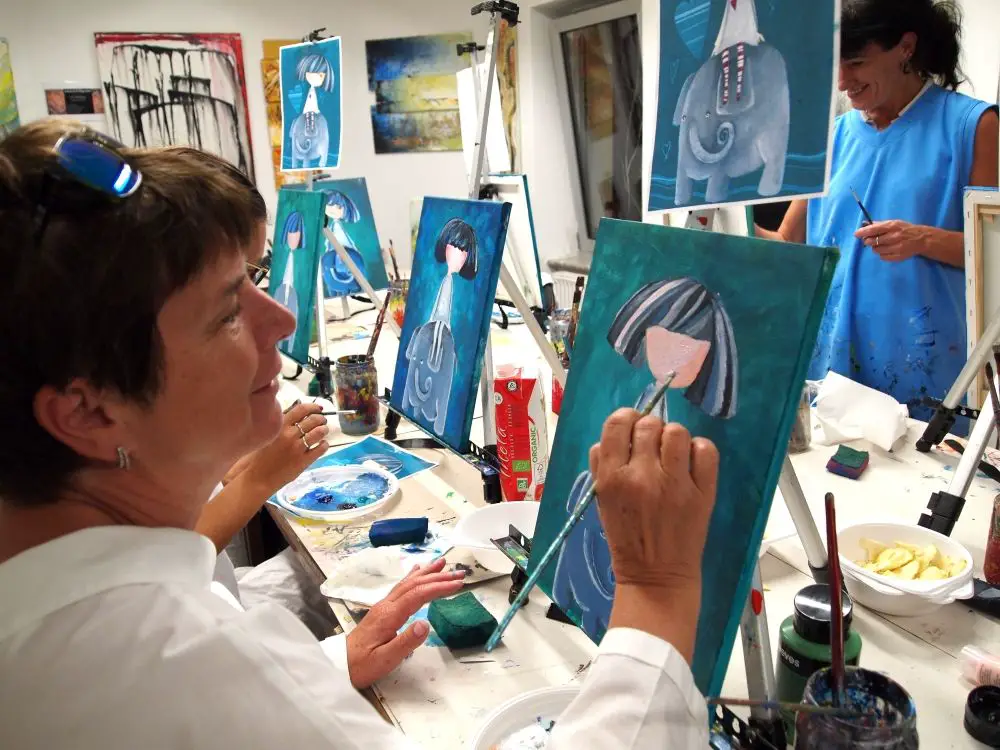
If you want to see some antiques, then check out the wonderful Antika Carniola, as discussed here. The man behind it, Jaka Prijatelj, has a fine eye for life on this street, as you can see on his Facebook account.
Photo: JL Flanner
If you’re in town and want to go jogging or walking in nature, why not take another look at the Castle, with a brief guide to the trails here. If you want something bigger, head to Tivoli Park.
And if you're bored with the Old Town, why not take a walk, cycle or boat ride to nearby Špica and enjoy the riverside life. Learn more about that here.
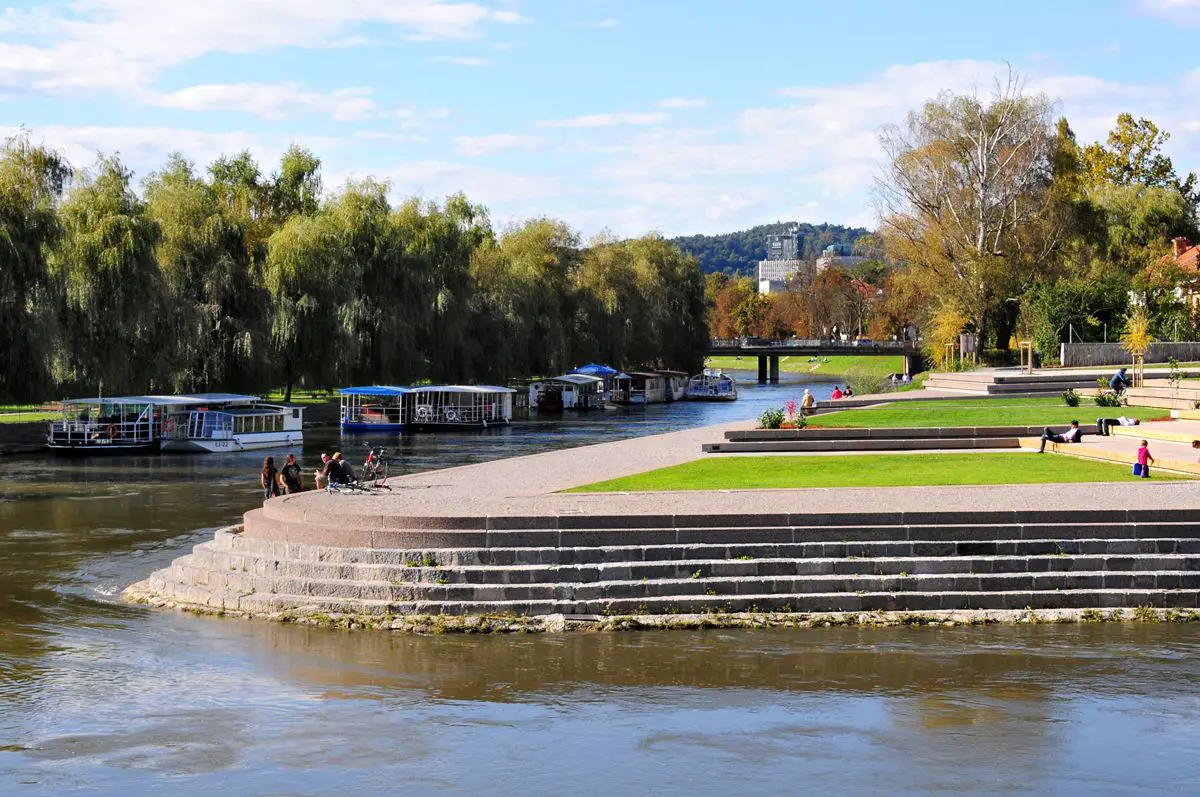
visitljubjana.si
![]()
maxpixel.net, public domain
Want to stretch and breath? Then check out our list of drop-in yoga classes for tourists, visitors and the uncommitted. If you're heading to the coast, check out our interview with a yoga teacher who offers breakfast sessions there, while if you're staying in town (or nearby) and want to try some "family yoga" then you can learn more about that here and maybe get your kids to calm down a moment or two.
There are some golf courses near Ljubljana, but even ones further away are not far, as seen in our list of all the golf courses in Slovenia. Note that these close when the snow starts, if it ever does this year, in which case you might be interested in what's new at Slovenia's ski resorts for 2019, as reported here.
![]()
Photo: maxpixel.net, public domain
Daytrips from Ljubljana
Most of Slovenia is only a few hours from Ljubljana, and you can easily visit Lake Bled, Lipica Stud Farm, Postojna Cave, Predjama Castle, the coast and other locations, while if you'd like to take a photo of from that bench in Bled, then you can learn how to get there here. If you’re looking for something more ambitious, then check out our recent guide to the 17 members of the Association of Historical Towns of Slovenia
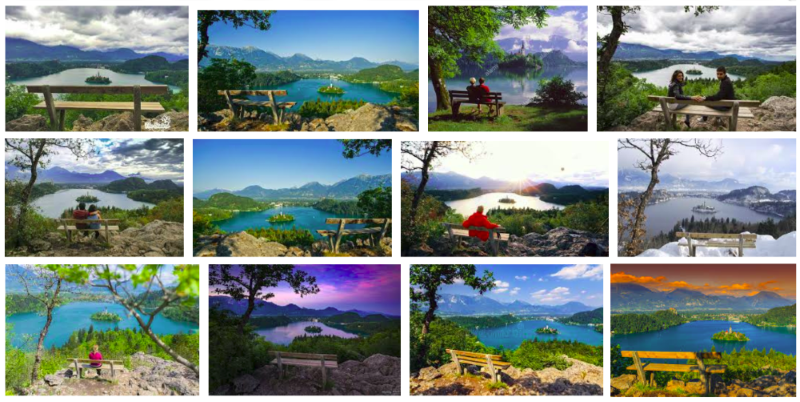
Photo: Google Image Search
Finally...
1. You can see all our stories tagged Ljubljana here
2. We found ourselves with friends in Ljubljanski Dvor for pizza this afternoon and had forgotten about the raw size, majesty and value of their 50cm pizzas, which math says is an incredible 1,963 cm2 of flat surface, or somewhat more due to the uneven nature of the actual “pie”. See a write up of an earlier visit here.
STA, 11 January 2019 – Gynaecologists (ginekologi) in Slovenia have too many women enlisted as their patients, which leads to lower-quality examinations and longer waiting times. They thus urge authorities to reduce the number of women per gynaecologist to preserve the achieved high level of gynaecological care.
Medical Chamber representatives told the press in Ljubljana on Friday that a shortage of gynaecologists and ever new generations of women entering the system had affected access to gynaecologists.
They believe at least 30 new gynaecology teams would be needed to cope with the shortage and take the pressure off overburdened gynaecologists.
In 2018, a gynaecologist had an average of 4,800 women enlisted as their patients, while the college of gynaecologists and obstetricians maintains 4,000 would still be an acceptable figure.
However, some gynaecologists had even more than 7,000 women enlisted, explained Domžale Medical Centre gynaecologist Petra Meglič, who treats some 6,200 women.
All women, including girls aged at least 13, are entitled to choose their personal gynaecologist in Slovenia.
Since some 700,000 women have their personal gynaecologist, gynaecologists carry out more than 1.5 million medical examinations a year.
Another burden is a number of administrative tasks gynaecologists are obliged to carry out, which further shortens the time they have for their patients.
An aging and shrinking profession
Gynaecologists are, moreover, getting older; in 2017, out of a total of 361 active gynaecologists, 160 were older than 50 and 82 older than 60.
Some 300,000 women could remain without their personal gynaecologist due to retirements in the coming years.
"Young specialists prefer to work at hospitals, as working in a gynaecology office is extremely specific, with constant high pressure to process a mass of women," said Meglič.
She also said her office rejects 10 to 20 women who have not yet chosen their personal gynaecologist a day.
According to gynaecologist Renata Završnik Mihič, young doctors are eager to specialise in gynaecology, yet not enough residencies had been opened over the past years to make up for the shortage that would stem from retirements.
The system is working only because gynaecologists assume ever more work, which leads to burn-out.
They thus called on authorities to overhaul the standards governing the number of women patients per gynaecologist, which were adopted in 1994, taking into account population ageing and new discoveries in medicine.
In this way, the country will preserve its quality gynaecological care, few unwanted and teenage pregnancies, relatively few abortions and a low rate for cervix cancer.
STA, 10 January 2019 - The Slovenian word of the year 2018 is čebela (honeybee), the Research Centre of the Slovenian Academy of Sciences and Arts (ZRC SAZU) announced on Thursday. More than 2,000 votes, which is a new record, were collected in the third campaign to pick the word that left the biggest mark on the past year.
Honeybee was followed by micro-plastic (mikroplastika) and a cup of coffee, while the shortlist also included woman general (generalka), orbanisation (orbanizacija), graphic novel (risoroman), hatred (sovraštvo), texting (tekstati), tactile book (tipanka) and guard (varda).
According to Simon Atelšek, researcher of the Fran Ramovš Institute for the Slovenian Language and one of the authors of the Beekeepers' Terminological Dictionary, the Slovenian terminology in beekeeping has very few loanwords.
"This is because Slovenians have always been very advanced in this field - Anton Janša was appointed the head of the first royal beekeeping school by Habsburg Empress Maria Theresa in the 18th century - so we have been exporting our know-how rather than importing it like in law, military etc."
Another interesting fact is that "we had as many as four individual beekeepers' manuals by the mid-19th century, which is extraordinary compared to any other related field," Atelšek said.
Slovenian terms used in beekeeping reflect the great respect Slovenians feel towards honeybees, he said. While there are two different terms for dying for animals and humans in Slovenian, the term for bees is the same as for humans.
Moreover, the term for the queen bee is derived from the word mother in Slovenian.
This year, more than 2,000 people cast their vote for the word of the year in an on-line poll published on the website of the ZRC and the MMC portal, and both partners' accounts on Facebook and Twitter.
That is twice as many as last year, ZRC SAZU said.
The most innovative word of the year was also picked this year. The winning word is drečka, a bag for picking up dog poop.
Word of the year proposals are collected throughout the year and then a jury of experts makes a shortlist of ten words, which are put up for a vote.
In 2016, the word of the year was refugee and in 2017 European champions.
All our posts on the Slovenian language can be found here
STA, 10 January 2019 - Slovenians place the highest trust in firefighters, nurses and scientists, but they distrust politicians and priests the most, while they also hold domestic SMEs in high regard, a survey has found.
The survey, conducted by pollster Valicon, showed fire-workers enjoying a 93% trust rate as the most trustworthy profession, followed by nurses (76%) and scientists (61%).
The least trusted professions are priests (-53%), government ministers (-69%) and politicians in general (-86%), however Valicon said that all of them fared better than December 2016 when the survey was conducted for the first time.
The most trustworthy institution or organisation is Slovenian small and medium-sized businesses (SMEs) with a 56% trust rate, followed by the company or organisation where the respondents work 38%.
The police force ranks third at 30%, followed by the armed forces at 22%, while the list is trailed by the ruling coalition parties (-61%), the National Assembly (-64%) and opposition parties (-67%).
The trust rate is calculated based a margin between the number of those who say they trust an institution fairly or very and those who say they do not trust it at all or rather don not than do.
Many still dissatisfied with the general situation in the country
The survey, called Slovenia's Mirror, also found that the proportion of those who are satisfied with the situation in the country in general rose from 2% at the time of mass anti-establishment protests in December 2012 to 28.4% in December 2018.
In turn, the proportion of the dissatisfied fell from 91% to 43.9%, while 27.7% said they were neither satisfied nor satisfied.
More than seven out of ten said they were happy personally, which compares to 58% six years ago.
The proportion of those who are optimistic about the future rose by more than ten percentage points to 43.5%, while the percentage of the glum nearly halved to 18%.
But only 20% believe that the situation in society is turning for the better, against roughly 40% who believe it is turning for the worse and as many who think the situation is not changing.
The survey was conducted based on an online panel of respondents between 14 and 16 December and between 21 and 23 December involving 1,001 respondents.
STA, 10 January 2019 - The local community of Moravče, a town north-east of Ljubljana, called a news conference on Thursday to allege that lorryfuls of toxic waste from the site of a 2017 fire at the Kemis waste-processing facility near Vrhnika had allegedly been dumped at a brownfield site in Moravče, allegations that Kemis denied.
Milan Balažic, a former Slovenian ambassador to Australia who was elected Moravče mayor in last year's local elections, laid out the case to the public, urging the government to impose an immediate ban on waste disposal at the site, or else face legal action in Brussels.
"A few days ago we obtained documents proving that tens, hundreds of heavy lorryfuls of toxic waste from the Kemis fire site were buried in Moravče in 2017 and 2018," Balažic said, warning that the site is located in a water protection area criss-crossed with surface waters.
As a result the toxic water is dripping into the local brook, which falls out into the Radomlja river and from there into the Kamniška Bistrica and into the Sava, Slovenia's longest river, he said.
"You understand that what has been hidden in the Moravče valley will not stay there," the mayor said, adding that "we can easily say that this is an environmental time bomb ticking at Ljubljana's doorstep".
The dump site is located on the site of an abandoned quartz sand quarry operated by the company Termit.
Asbestos, glass wool, plastic and oils in the soil
"After 2000, Termit started filling up the holes with building waste material, at least that's what's been published, including asbestos, glass wool, plastic and various oils, all of which became a serious threat to the soil, water and air in the Moravče valley," Balažic said.
He noted that the locals voted against further disposal of waste in a 2007 referendum.
Balažic accused the previous mayor, Martin Rebolj, to have colluded with the management of Termit to go around the result of the vote so that waste kept piling up at the site and even increased "to 100,000 tonnes a year".
Speaking about the waste from the Kemis fire site, Balažic said that "lorries with skull symbols" were spotted carrying waste in the valley even during Christmas and New Year holidays, with "eyewitnesses reporting that workers in hazmat suits were burying the material".
Alongside Balažic, the press conference was also addressed by Ljudmila Novak, a local who serves as MP for the opposition party New Slovenia (NSi). "Lately, we have been noticing that the tap water is strongly chlorinated and the feeling is that it's not drinkable at all."
As an MP Novak will demand a list of companies that bring material to the site, which she indicated came from Slovenia and abroad, as well as official data on the quantities, substances and oversight.
"We're wondering whether the state is wilfully burying its head in the sand, considering hazardous waste removal and processing is not regulated in Slovenia," Novak said.
"We are seeing absurd situations; a company brining in 200 or 300 kilos of building material from Koper. How is it viable for a company to haul such building material from Koper to Moravče? Either it doesn't pay or they are hauling materials that don't belong here," said the head of a local initiative Jurij Kočar.
He reported that from Kemis "130 tonnes of waste water sludge, two tonnes of building waste, presumably from the fire site, and some 60 tonnes of waste of unknown origin" were dumped at the Moravče site in March 2018.
The Kemis fire site restoration officially completed in 2017 and the hazardous waste was officially transported abroad for incineration. "These are official explanations, but it would be interesting to know what from Kemis in fact ended up in Moravče," he added.
Companies reject the allegations
Both Termit and Kemis denied all the allegations, Kemis issuing a statement saying that all hazardous waste from the May 2017 fire and restoration of the site "has been transported abroad for incineration" and that the company had documents to prove that to anyone at any time.
But Kemis admitted to small-scale cooperation with Termit prior and after the fire. "In 2017 it transported about 60 tonnes of non-hazardous waste to Termit, that is unpolluted building material, and in 2018 about 200 tonnes of non-hazardous waste collected from our business partners."
"The claims about Kemis made at the press conference today are completely untruthful," Kemis said, urging the speakers at the press conference to present the public evidence on what was in fact brought to Termit from Kemis.
At the press conference, the Moravče mayor urged the government to ban disposal of all waste in Moravče, prosecute those responsible, commission an independent report to the determine the level of pollution in the Moravče valley, and see to the removal of waste and restoration of the site.
Unless measures are taken, Balažic threatened further steps. "We will initiate legal proceedings against the company Termit, and Slovenia will be reported to the European Commission and other relevant EU bodies for breaking the Stockholm declaration and national and EU law."
Environment Minister Jure Leben has already ordered inspection of the site. "I'm the first to be impatiently awaiting the results. Measures will follow," Leben said on his Twitter account.
Meanwhile, chief environment inspector Vladimir Kajzer told TV Slovenija that seven inspections had been conducted at Kemis over the past three years and that no flaws were detected.
January 10, 2019
If you ever wondered about the source of the Slovenian expression “bolje vrabec v roki kot golob na strehi” (better a sparrow in the hand than a pigeon on the roof), here’s a hint in a 1982 cookbook on the tricks of “our grandmothers”:
“In bourgeois houses, housewives would prepare a feast with the following menu: frog soup, cooked snails, sparrow risotto, and roasted pigeons. Before the First World War, these specialties were on offer at the Zvezda restaurant in Ljubljana, where our grandfathers liked to go to enjoy these delicacies.”
(Pavle Hafner, Ta dobra stara kuha, Pečeni golobi, 1982, p. 132)
Although sparrow risotto recipe is mentioned it’s not included in this recipe book, and in fact we had difficulties finding any sparrow recipes elsewhere, Valvasor’s 1799 cookbook included. However, there are still quite a lot of recipes that use ingredients, particularly those from the animal kingdom, that are hardly common or even considered as edible today.
As suggested in the quote above, the big changes in traditional cooking did in fact occur no earlier than in the second half of the 20th century, when the so-called second wave of globalisation affected not only the ways of life in the Old World, but also the world in general. And its effects, due to cultural exchanges and the consequences of the environmental degradation following the process of industrialisation, sooner or later revealed themselves on every person’s dining table. Traditions were thus forced to reinvent themselves at a very rapid pace.
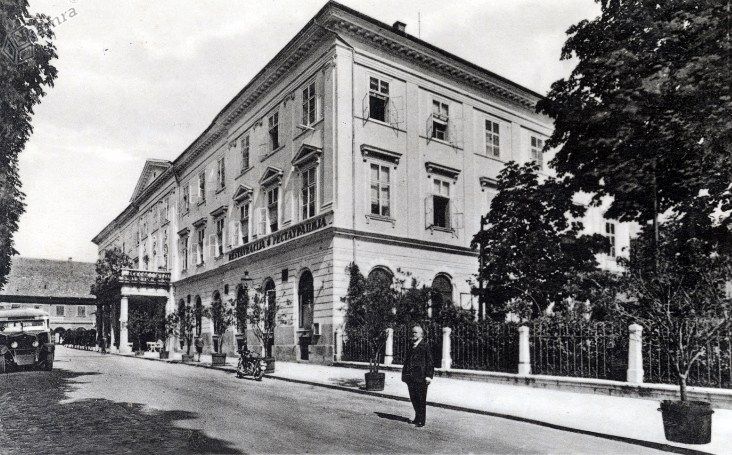
Kazina (1932), Congress Square in Ljubljana , the location of Zvezda restaurant where most of the dishes below were served long into the 20th century
Kazina today
In this article, we take a look at some of the meat dishes that used to be served at bourgeois dining tables long into the 20th century, but are either not as common now or completely gone from “traditional” Slovenian cuisine.
- Frog legs.
Although frog legs remain a delicacy that can still be found in a handful of restaurants across Slovenia, Pri Žabarju (At the Frog Hunter’s http://prizabarju.si/en/ ) being one of them, they are far from as common as they used to be. The Ljubljana marshes, for example, used to present an abundant source of frogs and their legs, which at least since the beginning of the 16th century could be found at the city fish market, located at today’s Fish Square in Ljubljana.
In the abovementioned book, we find several frog leg recipes, including one for a frog soup, which goes like this:
“In spring, when frog hunters began hunting frogs, our mother often cooked us frog soup. Us, the kids, appreciated fried frog legs more, but our father preferred the soup. There’s lots of work with frog soup, as its preparation is quite demanding.”
For the vegetable stock finely chop the listed vegetables and boil them in two litres of water for about with an hour, with the addition of some salt, ground pepper and nutmeg.
We stir fry the frog legs in fat and then add the vegetable stock to the pan. Then we add the chopped green parsley and cook for another 15 minutes.
The soup is served with toasted buns.
- Pigeon roast
Pigeons used to be farmed in the cities and countryside, and were prepared in various fashions, including roasts, stews and risottos. Here is a recipe for pigeon stew from the Hafner’s 1982 cookbook we’re using for this story.
We clean the pigeons and rub in the salt and leek. We cover their breasts with bacon and tie them with a string. We roast the pigeons in hot lard. In a separate pan we put the butter, chopped onion, chopped bacon, chopped parsley and chopped sardine fillets. Lightly stir fry these and add salt. We then pour in the beef stock and white wine and let it all simmer. Then we add the roasted pigeons and lemon. We stew until the meat is soft. We serve the pigeons in the pot they were stewed in.
- Stuffed garden snails
Although most of the people I know consider land snails as a non-food, they still appear to be quite a popular delicacy, especially in Europe, albeit less so today than they used to be. In Slovenia, garden snails used to be picked in spring, when they were still sealed and hibernating and their digestive organs empty. If we pick them later, they first need to be starved, which according to Hafner usually takes two days. We put the snails in the fridge so that they retract into their shells and seal themselves. When closed we place the animals into boiling water and cook for 20 minutes. After this first boil, we extract the snails from their shells and remove their bowels – apparently these organs will be easy to see and extract at this point. Then we put them in a strainer and sprinkle with rough sea. We then rinse them until all the slime is gone.
The cleaned snails should now be cooked, continues Hafner, in a soup made of chopped carrot, half an onion, thyme, pepper berries, and root parsley. We can also add some white wine, vinegar or lemon juice and salt. In this soup we cook the snails for about an hour, depending how big they are. If we are going to use the shells, they first need to be thoroughly cleaned using hot water and soft brush.
We prepare garlic butter with parsley, stirring finely chopped garlic and parsley leaves into butter and adding some salt. In each of the snail shells we add a teaspoon of soup then push a snail in and seal the opening with the garlic butter. We place stuffed snail shells in a pan and bake them in a hot oven for about five minutes. We serve them hot.
Some special utensils are used when eating this dish: a scissor-like tong for holding the snail, a small fork which we use to get the snail out of his or her shell and a small spoon, where we pour the soup from the shell.
- Barbecued dormouse
Dormouse hunting has been popular in Inner Carniola for centuries, and the first historic account of the practice dates back to the 13th. Dormice used to be an important source of fat, protein and fur, and the original reason for hunting them was survival. Today, however, the main goal of polhanje as dormouse hunting is called in Slovenian, is not in catching a dormouse, but rather in the continuation of a tradition which mainly remains as a fun social event.
In Hafner’s book we read that “we hunt dormice in the late fall. The traps are placed on old beech trees and in pear orchards. Gourmets know well what a treat roasted dormice are. However, one needs to know how to prepare them properly. There are two ways to prepare them: on a barbecue or in a pan.”
Dormice are barbecued in the open air, after we have caught them. A skinned dormouse is threaded on an iron skewer, with a snow pear and a slice of bacon pushed into its belly. Sprinkle the animal with salt and pepper and place on the barbecue. Since dormice are hunted when they’ve stuffed themselves getting ready for winter, you have to pay attention so that the fat doesn’t catch fire.
- Boiled crayfish (Astacus astacus)
Crayfish used to be quite a popular dish in Slovenia, and it would still be so if the domestic varieties had not been depleted by duck plague 140 years ago, which was brought to Europe by the American invasive variety Signal crayfish, that is immune to the disease but spreads it. On top of this the number of autochthonous crayfish varieties are also shrinking due to human interference with their habitat, whether by water pollution or replacing the waterbeds with concrete floors. This is why crayfish hunting is banned in Slovenia, at least as far as the local varieties are concerned, and the recipe below, written in 1982, serves as a stark reminder of the consequences of environmental degradation and how it can change our diets:
“Two kinds of crayfish live in our streams, European or noble crayfish (jelševec) and stone crayfish (koščak). Jelševec is of a much better quality, since it is bigger and tastier.
We first clean the crayfish with a brush and then boil them while still alive. We heat a pot of water with a parsley root and some leaves in it. Before we place a crayfish into the boiling water, we pick it up by its back with our left hand and with the thumb and index finger of our right hand we hold the middle fin of its tail, rotate it and pull out. This way we remove the crayfish’s guts. We then boil the crayfish until they are red.
The hot boiled crayfish are then placed into a porcelain bowl. We add some of the soup they were cooked in, plus some chopped garlic and parsley, and place them on the dining table. We offer vinegar, oil and lemon so that every guest can season them the way he wishes.” (Hafner, p. 168)
STA, 8 January 2019 - The Koper Science and Research Centre (Znanstveno-Raziskovalno Središče Koper) has won a EUR 2.8m project as part of the Horizon 2020 research and innovation programme to study and help overcome the obstacles to the integration of migrant children into European societies.
The three-year project will run until the end of 2021, the Koper centre said in a press release on Tuesday.
This is the first Horizon 2020 research project in the field of social sciences that will be led by a Slovenian centre, said the Koper centre, which was picked among 30 bidders from all over Europe.
The project entitled Migrant Children and Migrant Communities in the Changing Europe will study the inclusion of migrant children in the societies of European countries from the perspective of the child.
Based on field studies carried out in ten countries, recommendations for legislative changes and political measures will be made. Computer applications featuring tools aimed at improving the integration of children into the society will be developed for use in almost all EU countries.
Field research will be conducted in primary schools and high schools, migrant centres and asylum centres in Slovenia, Austria, Spain, the UK, Denmark, Poland, Italy, France, Greece and Turkey.
Researchers will develop various computer apps for teachers, migrant children and local children to promote multiculturalism and dialogue.
The Koper centre will cooperate on the project with three other Slovenian institutions - the Peace Institute, the Faculty of Computer and Information Sciences, and the Faculty of Design.
Skrbovin’ca is new project run by the City of Ljubljana and four day care centres for people with disabilities. It’s a good reflection of how the city has changed over the last few years with regard to how it considers the needs of all members of the community. And while these changes are the results of the efforts of many people, it’s notable that the City’s Mayor, Zoran Janković, has taken a personal interest in the matter.
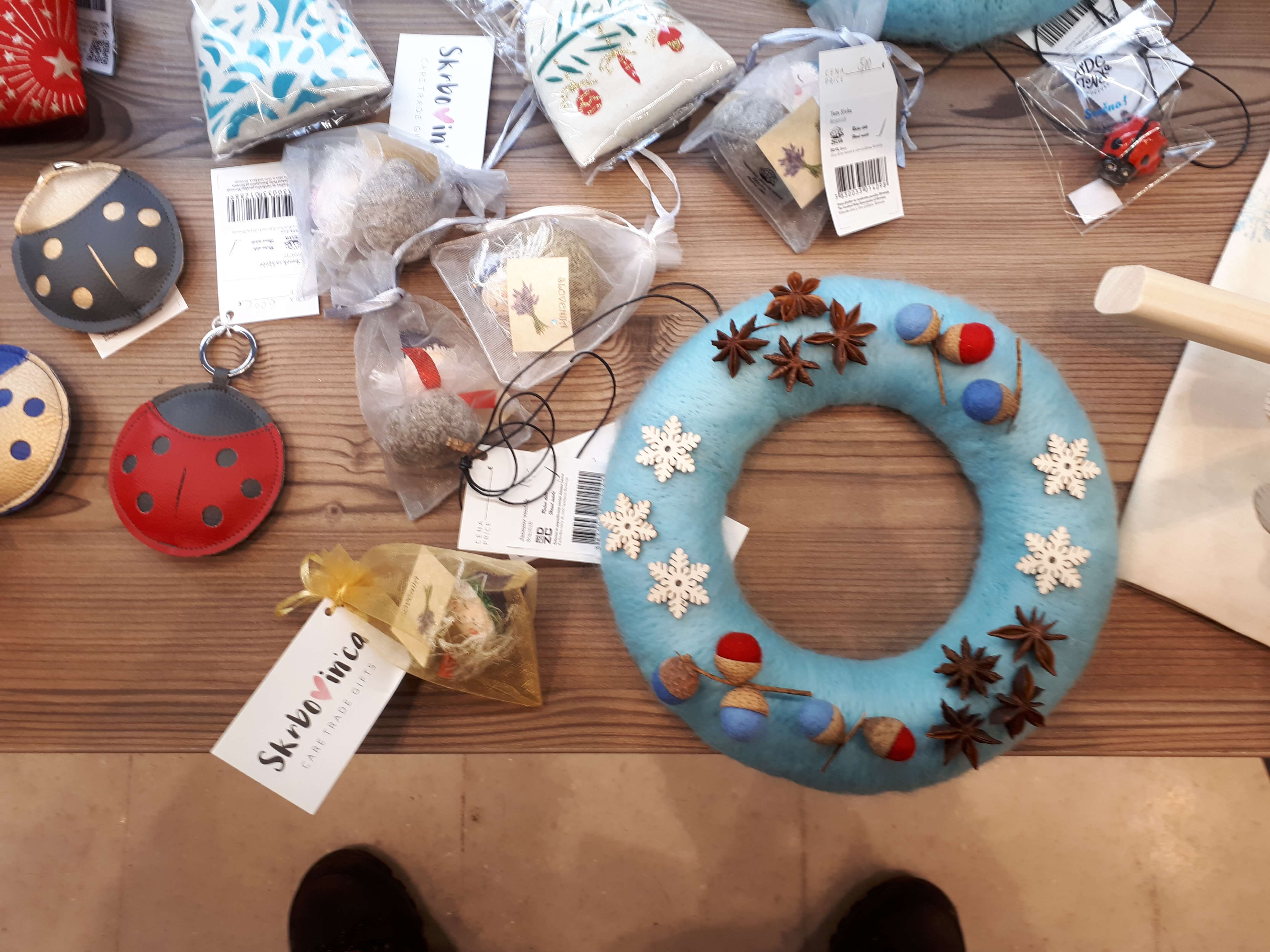
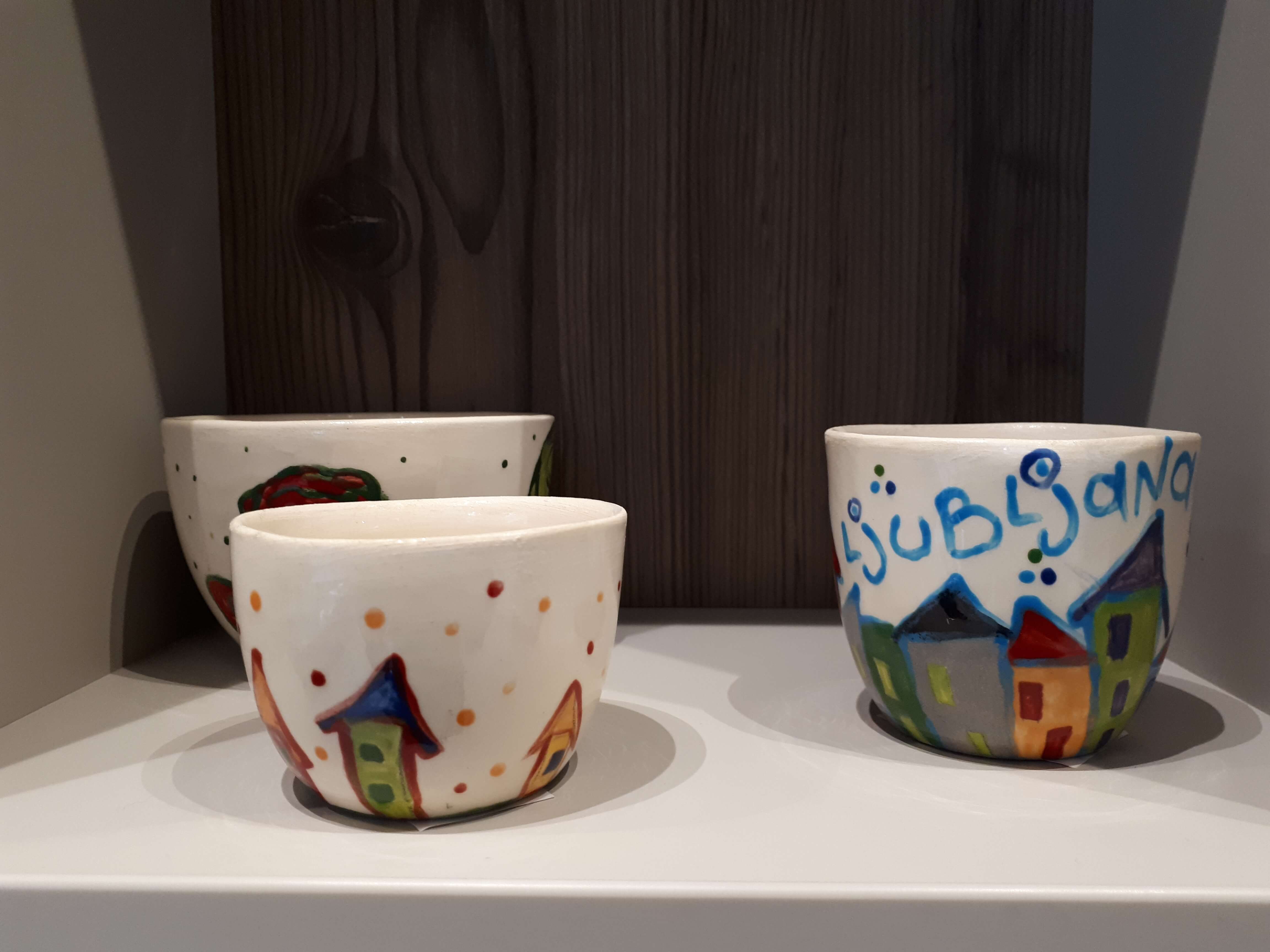
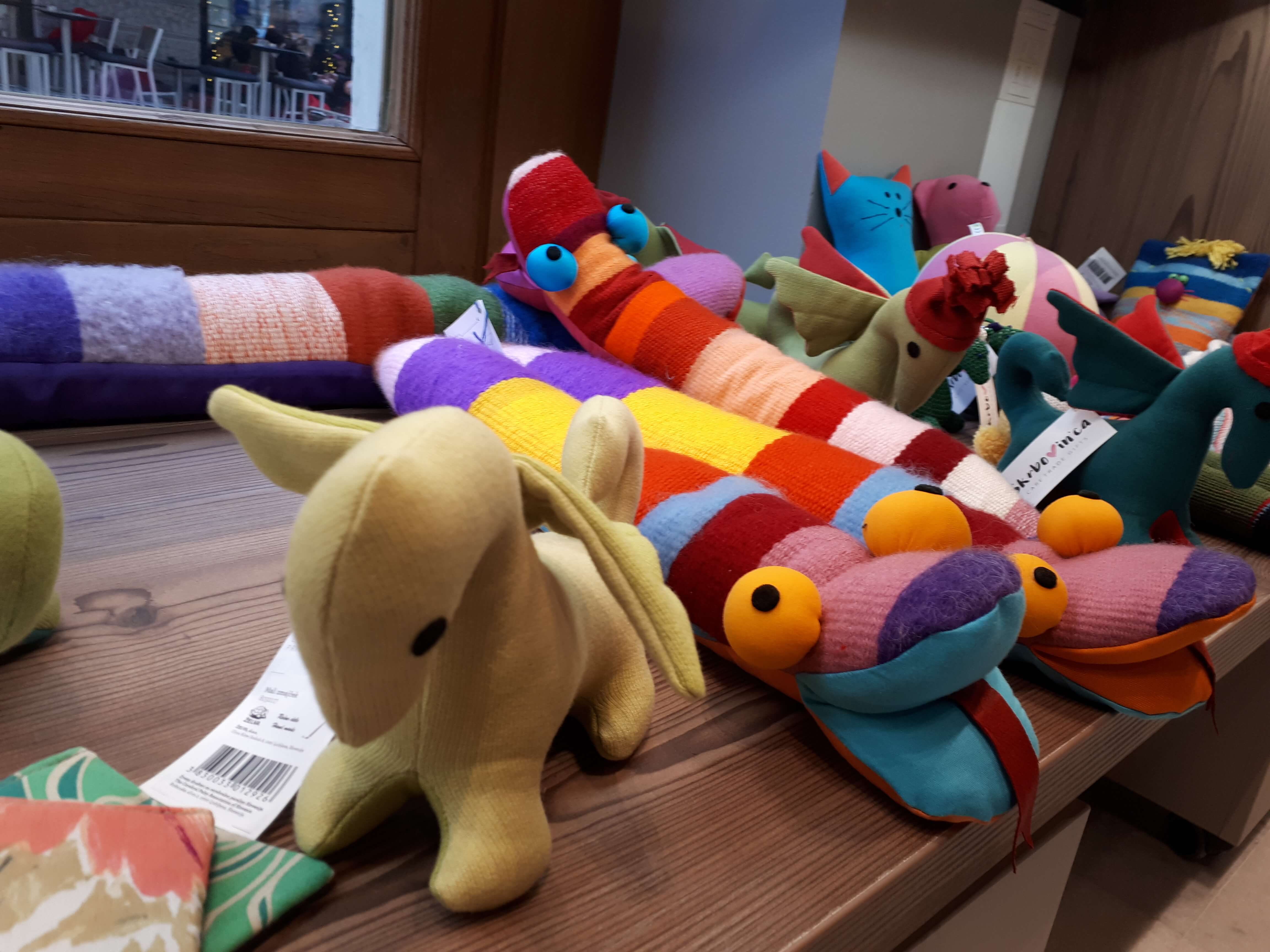
Skrbovin’ca, which means “care trade”, is a multifunctional space that at first pass looks like a souvenir store, albeit one selling handmade items rather than mass-produced factory goods of unknown origin. Here you’ll find the creative products of Slovenians with various disabilities, physical and cognitive. In addition to making the items on sale, people with special needs also work as shop assistants, consultants, mentors and in other positions, gaining valuable experience and connections, becoming more engaged with the community they live in.
Related: What's on in Ljubljana this week

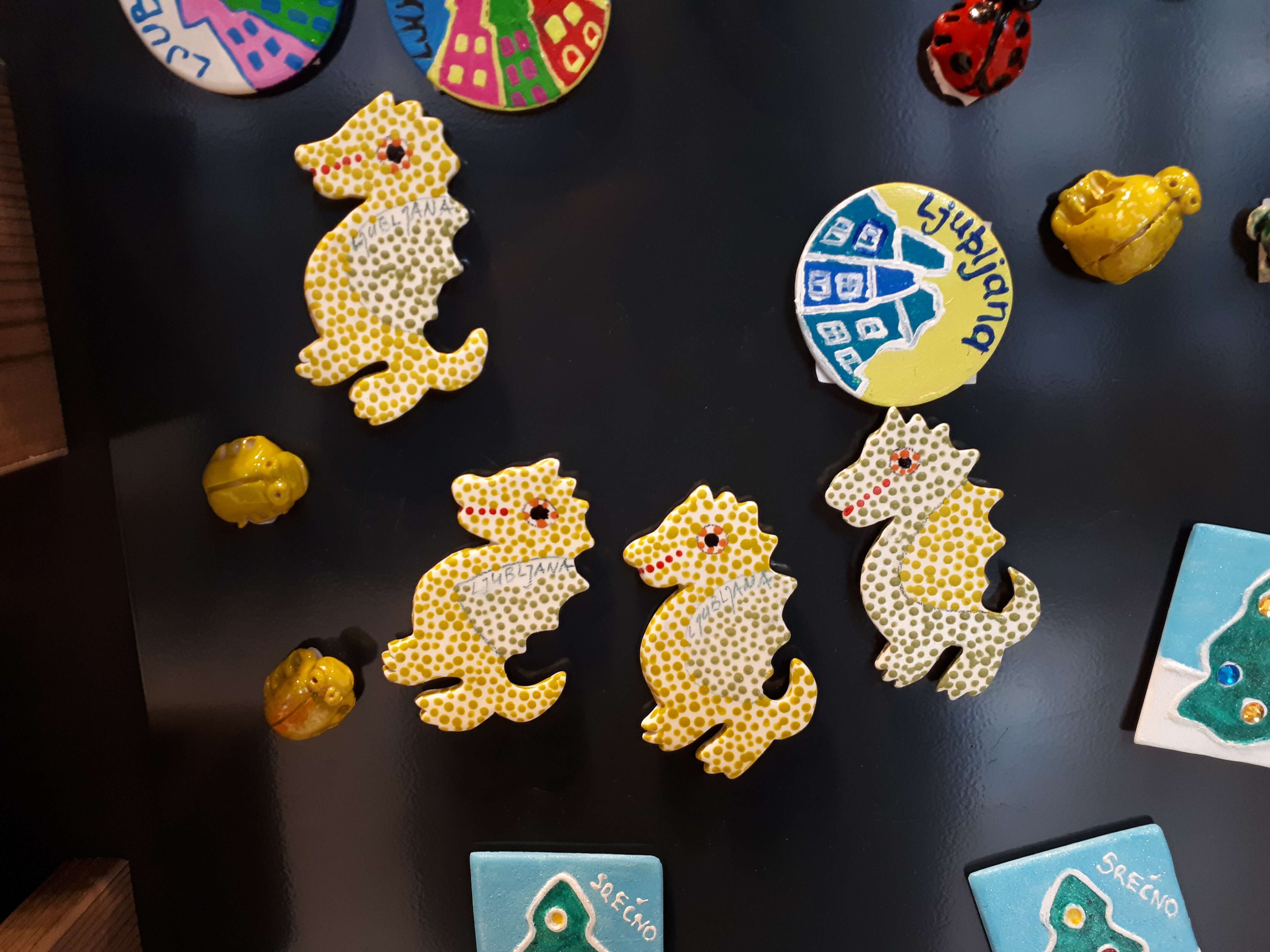
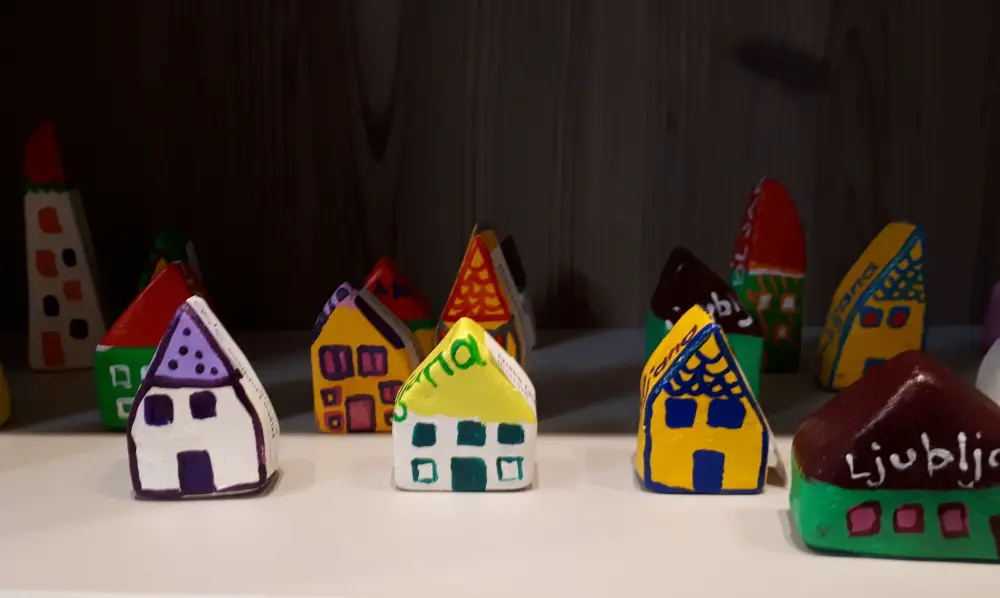
What’s more, it’s located right in the heart of Ljubljana, in the same building as the Tourist Information Centre by the Triple Bridge, on the corner nearest Town Hall (opposite Vigo ice cream store, to be exact), and is also one of the city’s official Info Points for those aged 65+ (although anyone, of any age, is assured of a warm welcome and somewhere to rest inside).
When I visited I met with Emir Okanović, the man who works there on most days and is able to provide assistance in five languages, chatting to me in perfect English and then slipping into German or French as needed when others arrived (he also speaks Serbian).
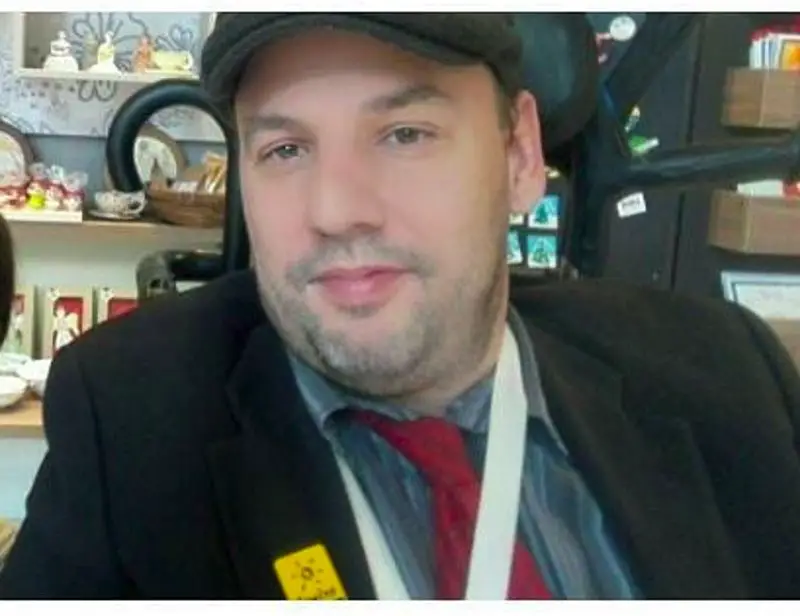
Emir Okanović. Photo: Emir Okanović
Emir was keen to stress the City’s support for this project, which was run on a trial basis for the first year or so, a test that it passed before officially opening in late 2018. He also noted that the tourist population, like that of Slovenia and developed nations in general, is aging, and that meeting the needs of such visitors makes economic sense, as well as making the city more accessible and welcoming to all.
Related: Ljubljana by Wheelchair - New App Highlights Most Accessible Spots in the City
“Ljubljana by Wheelchair [another City-sponsored project, as reported here] focuses on physical disabilities and mobility, but they tend to forget other disabilities, such as impaired hearing or vision, and especially people with combined disabilities, who are physically and mentally disabled. At Skrbovin’ca we take a different approach. We work with combined disabilities, so there are limits to what people can do and we have to work within these, but that’s also the niche we’re trying to fill, because this is a community that’s rather neglected, and is often otherwise unemployable. The items here are made on a production line basis, with strict quality control, and the producers are paid for their work.”
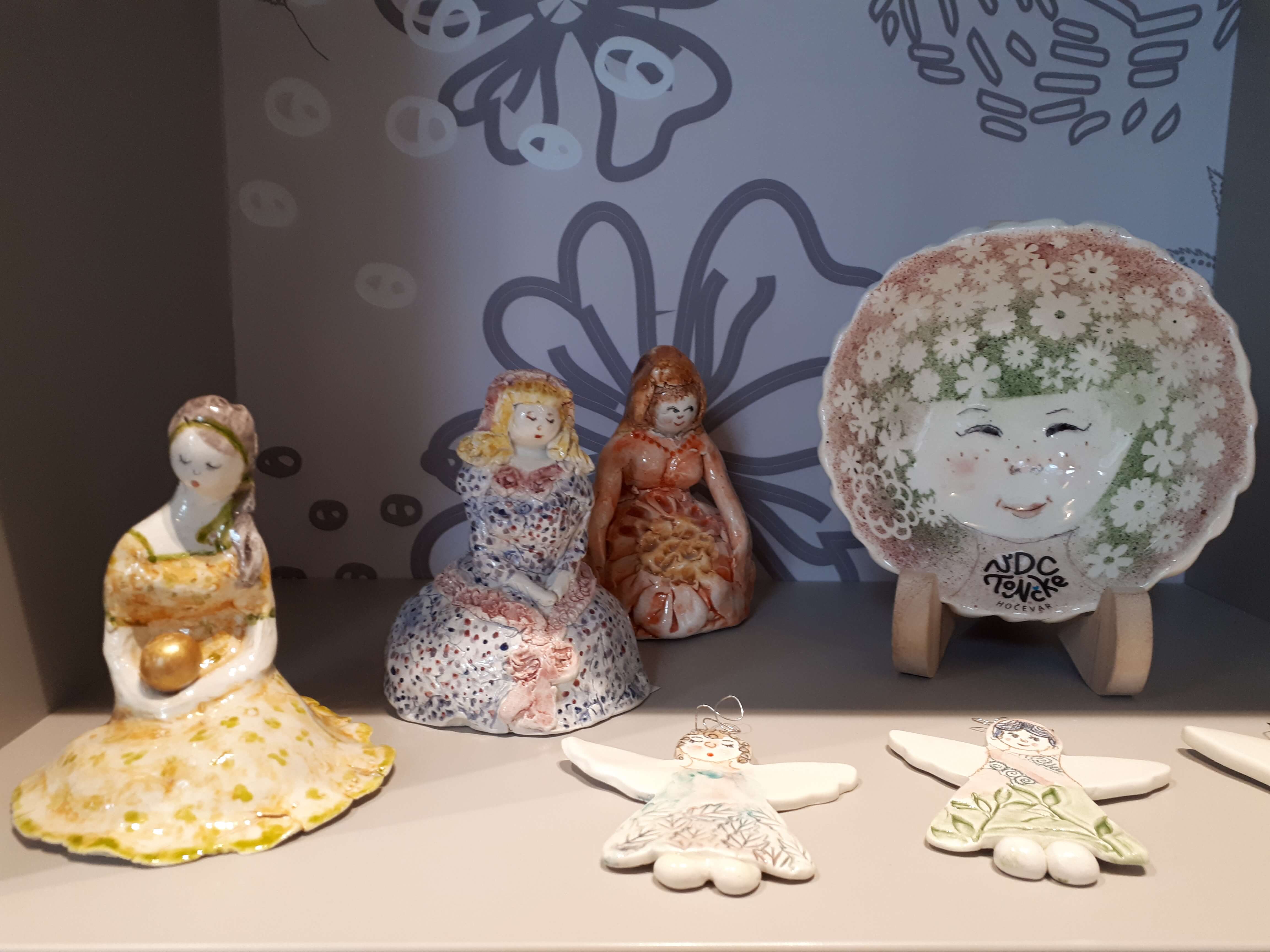
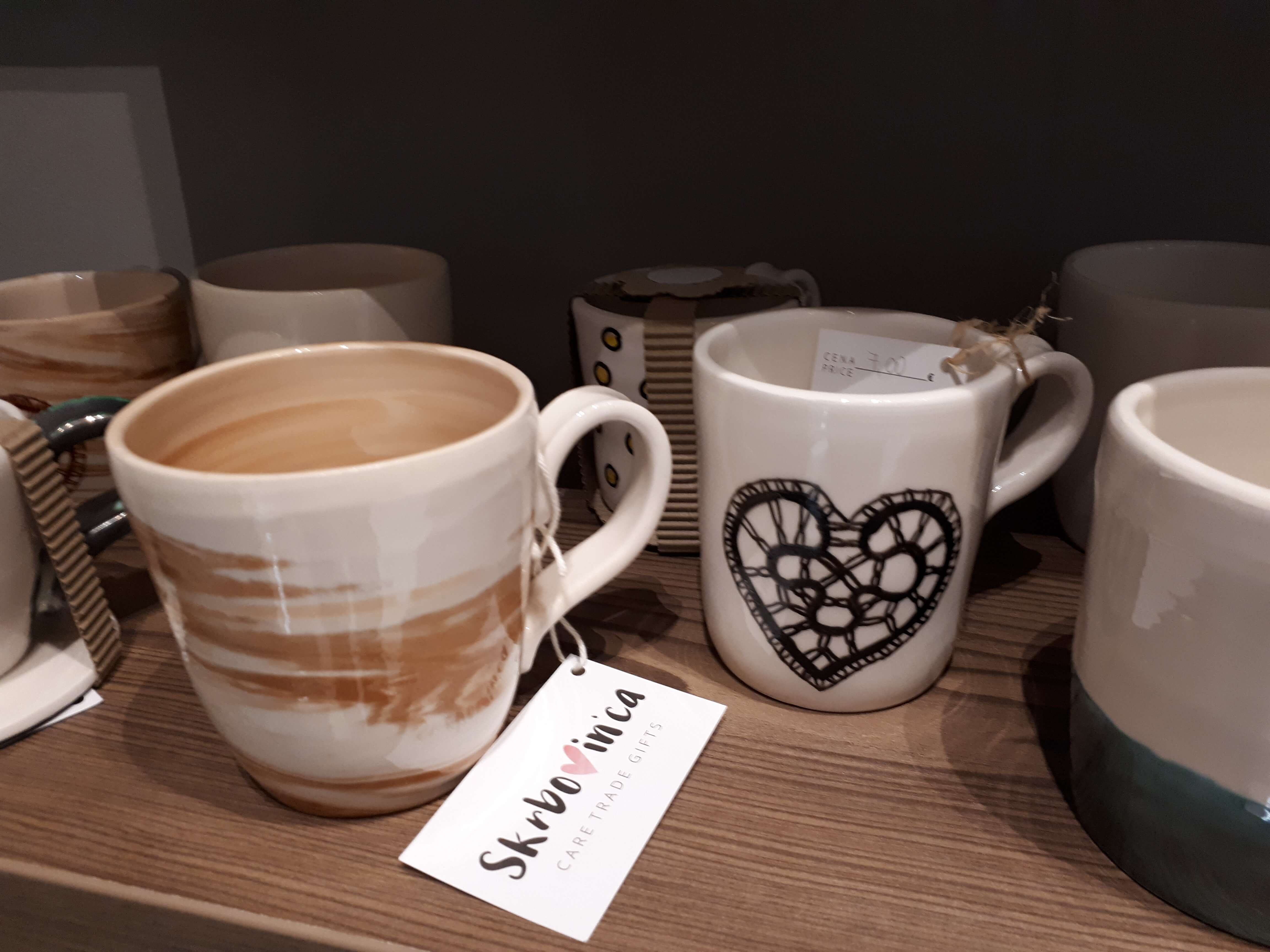
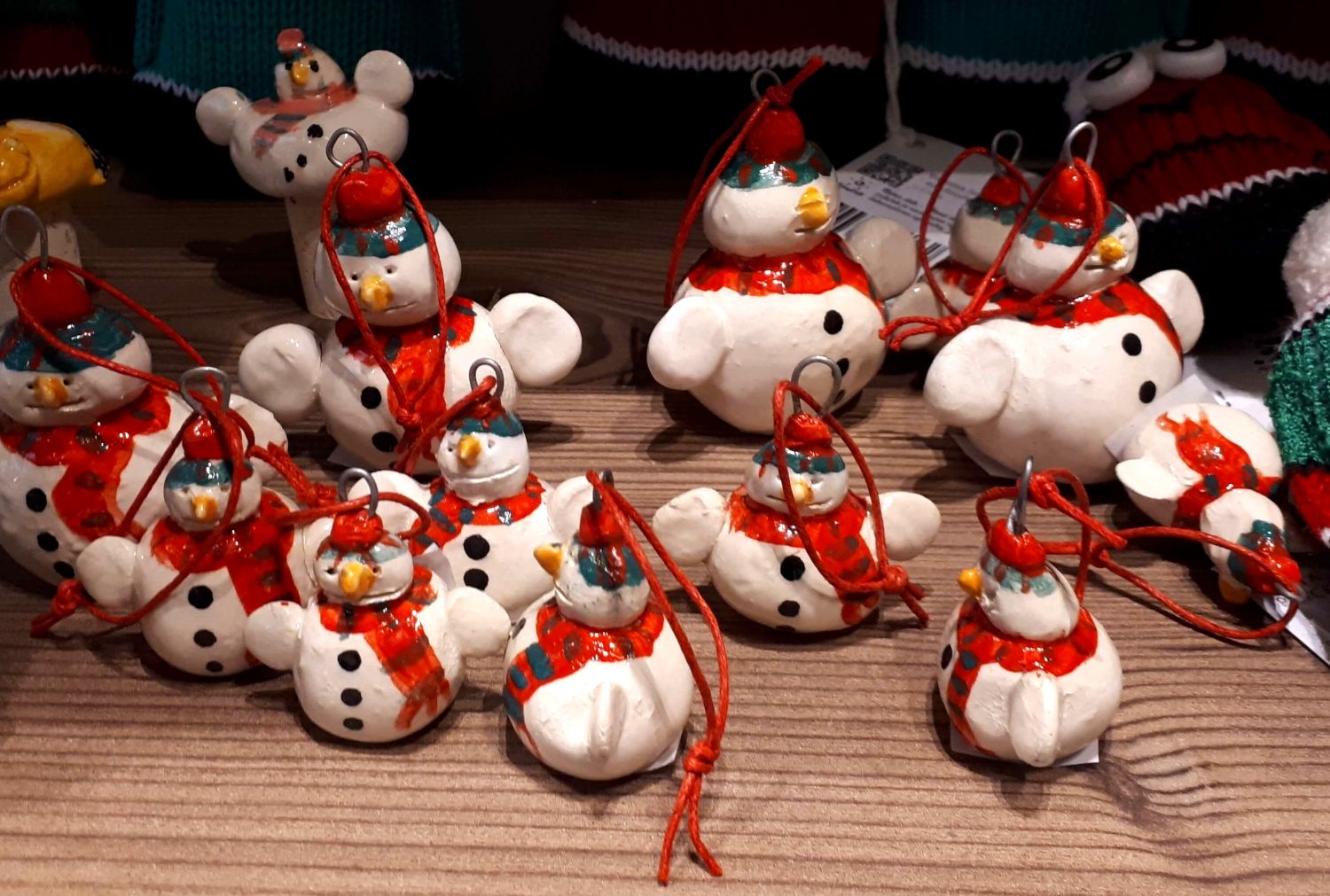
I visited in December
In short, Skrbovin’ca is a very welcome addition to the downtown area, and a hopeful sign that in the years ahead, as Ljubljana continues to grow as a tourist destination, the needs and concerns of all its residents and visitors will be listened to. The store and information centre is open from 10:00 to 20:00, and can be found at Mačkova ulica 1, 1000 Ljubljana. You can visit the Facebook page here, and the Instagram here.
STA, 9 January - Questions are being raised in Slovenia about the adequacy of criminal law and judicial discretion after it was reported that a man who raped a drunk woman was charged with criminal coercion rather than rape because the woman, passed out drunk in the man's apartment, did not - and could not - resist.
Dnevnik reported earlier this week that a man from Koper was sentenced to ten months in prison for raping a family friend, who was passed out drunk in the children's room in his apartment.
Testimony suggests the woman woke up after he had already undressed her and started raping her; she tried to resist but he continued to force himself upon her until he completed the deed.
While such an act would be widely expected to result in a rape conviction, the court had a different view and after a series of appeals that went all the way to the Supreme Court, the perpetrator ended up being convicted of a crime that is not even classified as a sex crime.
“Not rape when the perpetrator uses force after the sexual act has already begun”
In the last sentence handed down by the Koper Higher Court after the appeals, the judges held that it was not rape when the perpetrator uses force after the sexual act had already begun, which is why he was convicted of criminal coercion.
In this particular case, this in effect means that the drunk woman sleeping, waking up only after he had already started to rape her, was an attenuating circumstance for the perpetrator.
The crime occurred in 2015 and the bulk of the court procedures took place in 2017.
The case raises a series of questions, most notably about the definition of rape in the Slovenian criminal code.
As Dnevnik emphasises, the law says that rape occurs when a perpetrator coerces the victim into sexual intercourse with force or with serious threats. There is no mention of consent at all.
The current Slovenian criminal code was adopted in 2008 and revised several times since then, most recently in 2016, but the definition of rape has not changed.
Mirjam Kline, the head of the department for juvenile and sex crime at the Ljubljana District State Prosecutor's Office, told Dnevnik the model of coercion in place in Slovenia was outdated.
"It is also unjust because we always focus on the victim: how she resisted to make the perpetrator interpret that as resistance and knew this was against her will," she said.
Matjaž Ambrož, a professor of criminal law at the Ljubljana Faculty of Law, meanwhile pointed out for the Delo newspaper that the Higher Court had argued in the retrial the act constituted rape, but procedural constraints prevented it from re-classifying the crime after the District Court had already reduced it to attack on a feeble person.
Calls for a redefinition of rape
Several media have stressed that in countries such as Germany and Sweden the criminal code has already been changed to focus on consent, which would make sense in Slovenia.
This point was also raised by the Association for Non-Violent Communication, which called for a redefinition of rape.
"We know from our work with victims of sexual violence that rape is often caused without coercion ... in particular between sexual partners, where perpetrators commonly use indirect forms of coercion and threat," they said.
Despite the calls for change, the Justice Ministry said no changes were on the horizon at the moment since focusing on consent would be even more difficult for courts to process given that rapes are typically crimes without witnesses that rest on testimony by the victim and the perpetrator.
But it later said it took comments by the expert public to heart and would host a meeting next week to examine possible changes to the criminal code. "We expect them to present their views on the subject. Based on the conclusions of the meeting, we will be able to provide an estimate about potential shortcomings of the valid legislation and requisite measures," the ministry said.
The response came after public outcry over the case started escalating and several groups took up the cause.
Amnesty International Slovenije, an NGO, publicly called for changes to the criminal code that would be "compatible with international human rights standards, meaning it would be based on the absence of consent."
Institute 8 March, an NGO fighting for equal rights, launched an online petition demanding legislative changes based on consent that garnered over 1,000 signatures within hours, and the Left, an opposition party, initiated a formal motion asking the government to change the legislation according to the "no means no" model of consent.


